Note
Some more lighting advice. Don't forget about them windows.
I'm also working on a post about why everyone should get a continuous video light.
And I mean *everyone*.
So look out for that soon.
Hi!! Thank you for spreading the good word about ring lights! I'm an onlyfans girl, and I was JUST gifted a ring light. While using it I noticed most of you said, it's just not consistent enough for distance. Otherwise I've been using this bonkers bright lightbulb that I don't think is supposed fit in this lamp? It's definitely harsh and casts weird shadows. What can I do to make it work better for me? Should I get a second bonkers bulb and do the 45° thing? Or is the bulb itself the problem?

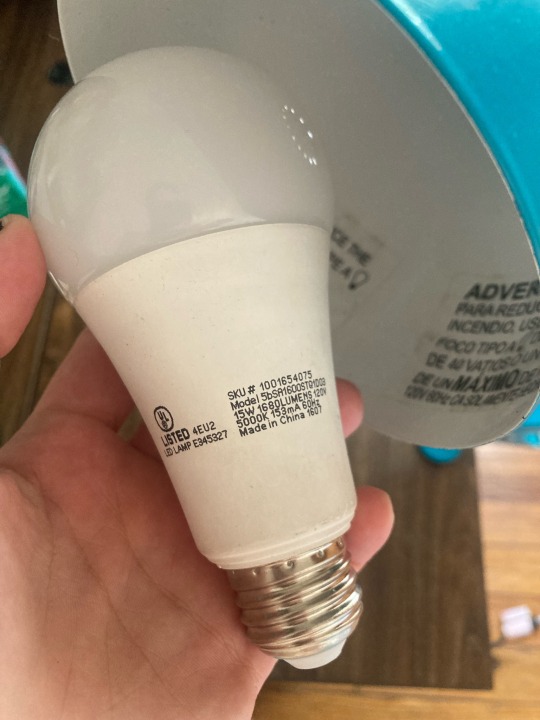
Idunno if you answer these kinds of questions, but I'm glad you're on tumblr doing your thing!! Thank you for your time!!
Sorry for the delayed response. I hope you don't mind, but I looked at some of the free photos on your Fansly. It looks like you have some really nice window light at your place.

You can actually leverage that as a light source. If you were to hang tracing paper in front of one or both of those windows, you'd essentially have two giant softboxes. The tracing paper would help give you some privacy and allow you to get closer to the light. You can also layer it if you need more diffusion. And tracing paper rolls are fairly inexpensive.
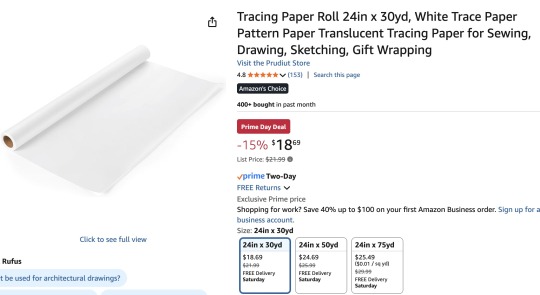
You could also use a white bedsheet or maybe a translucent shower curtain. I've also seen photographers use sheer curtains. You might even be able to make those look attractive and a permanent, convenient lighting tool.

I prefer tracing paper because it diffuses the light very uniformly while not knocking down the intensity a great deal. You can also DIY it into a frame that is easy to take on and off your window.
Then you can experiment with angling yourself towards and away from the window light, and I'm betting you could get some beautiful results. You could even use those windows as nice backlights.
I think the big mistake people make is that they don't realize how close lights need to be in order to look their best. Ring lights look best at only a foot or two away from the face. Their entire design philosophy was created because it was hard to get a camera close to something without it blocking the light. If the camera isn't in the way of the lighting, then you no longer need a ring light.
Even with the window light, you need to be as close as possible. Lights almost always need to be uncomfortably close.
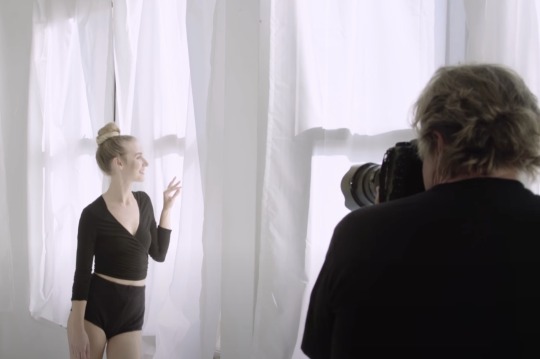
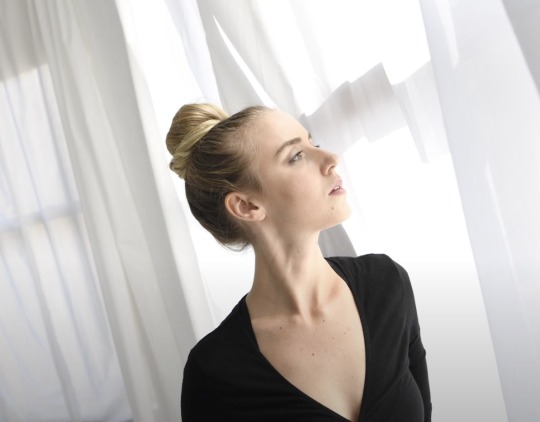
The ring light is still useful. As long as it is close enough you can do some nice head and chest shots. But you can also modify the ring light to work as a normal photo light. A white shoot through umbrella can do wonders.
I literally just taped it to my ring light and got a much softer light.
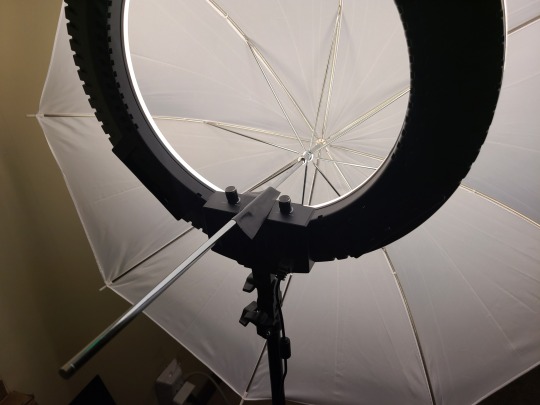
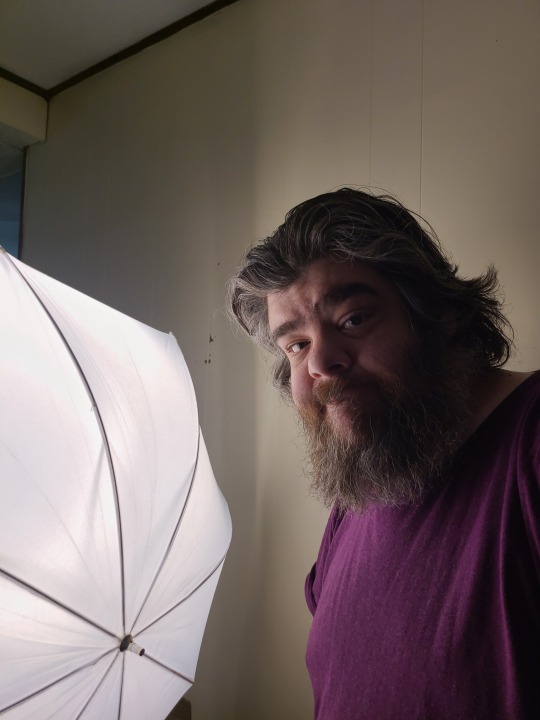
As far as the smaller lamp, that probably isn't going to be great for a main light, but it could work as a backlight or an accent light. Regular light bulbs, even really bright ones, are nowhere near as powerful as video and photo lights (or the sun). So even if you bounce them off a wall or put diffusion near them, you'd have to be super duper close for them to do much. The little reflector will help concentrate and focus the light, giving it more power, but it will still be underpowered for good photos. You could try the umbrella trick and see if it gives you good results, but it might be hard to keep it attached. Especially when the lamp heats up.
However, if you use the lamp behind or off to the side of you, it could act as a nice warm rim light. Putting a nice highlight on the edge of your shoulders and hair. I still think it might be underpowered though. Which is why using it as an accent light in the background might be its best function.
I think people often neglect their backgrounds. But using lights to highlight shelves and cool objects is a great way to create a vibe with your background.

Gerald has some soft light coming in from the left and right of his background. He has some orange accent lights for his shelves. Thinking about your scene holistically can really elevate your photos.
I think the window lights with diffusion in front would give you the highest quality results with what you have now. But you can't take photos/videos at night.
I think if you are going to keep making photo and video content regularly, the best thing you could do is invest in a proper video light.
This is going to be a mouthful...
A COB LED continuous video light with a Bowens mount.
Because of the mount, you can turn this single light into any kind of light source you need. You can put an umbrella on it. You can put a softbox on it. It comes with a reflector that you can use to bounce it into the ceiling or off a wall.
The only downside is it can take up a bit of space when a modifier is attached. If you use an umbrella modifier, you can easily break it down when you aren't using it. But if you get a softbox, you will basically have this big light taking up space in the corner.
This one by Newwer is probably the cheapest that is still good quality.

It is a budget brand, but they have a decent reputation. If you are willing to spend a little more, you can get a Godox. The light will look the same, but they are a more mainstream brand. And if you want to make sure the light is dependable and long lasting, Amaran makes very high quality lights with solid components.
So, good, better, best as far as reliability. But the quality of the light will be about the same.
I think the Newwer is a good "first" video light. It is bright. It has a Bowens mount. And it is "bi-color." This means you can change the warmth of the light to match the other lights in your room. So if you have a lamp in the shot and it looks blue, you can choose a warmer color temp to match the lamp and make it look warm again. Or if you have sunlight streaming in through the windows, you can match the light to that as well.
You will need to do some learning for a light like this. But if you put a big umbrella or softbox in front of it, you will get nice, soft light without much effort. If you have the space, there is no more versatile light for your purposes.
As far as modifier options, since you probably want to do full body photos, the bigger the better.
If it were me, I'd get this one.

(You shouldn't get this one. I am a crazy lighting guy who likes crazy lighting stuff.)
The product photo gives no sense of scale, but it's literally the size of a mattress. You could light 2 people, head to toe, with nice soft light.
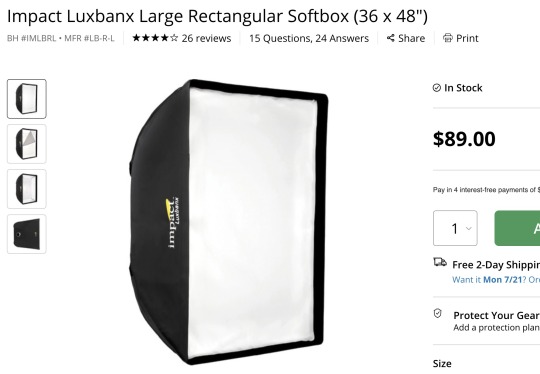
This one is a more reasonable size. It would be nice and soft for one person, but still acceptable for two people. It's still quite huge, but not "mattress" huge.
But most softboxes do not break down easily like umbrellas. While they are more suited for lighting entire bodies than a circular umbrella (they have less spill and more control), the big and unwieldy nature is not something everyone wants to deal with.
So a simple shoot through umbrella that breaks down easily is where I would recommend you start. And then you can upgrade to a softbox later on as you learn how to use the light more proficiently.
You can find umbrellas for 10-15 bucks on Amazon, but a high quality one isn't much more expensive.
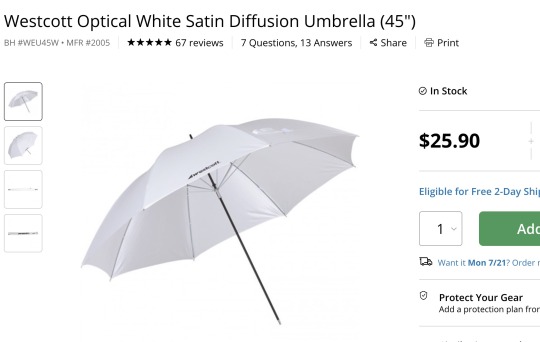
And if you want to get something a little bigger...

This reverse umbrella is a very reasonable price for 7 feet of soft light goodness. It's nearly mattress size, but it breaks down for easier storage.
Oh and you'll need a light stand. Don't forget the light stand.
AND... then you can use your ring light for other things. It can be a hair light, or an edge light. You can do that cool halo effect I did.
So you'd have a 2 light setup with a lot of room to grow with various modifiers.
To review...
Window light with tracing paper or sheer curtains can give you beautiful light without much expense.
If you want to make use of your ring light, just add an umbrella to get soft light.
Use your lamp as an edge light or accent light in the background.
And if you want to invest in a powerful, versatile light, there is no better start than a COB LED continuous video light with a Bowens mount.
And remember, all of these light sources can be mixed. A video light as your main light with your windows as a backlight could look very cool.
246 notes
·
View notes
Note
There were a few things brought up in the tags of my above answer.

I'm not sure I understand exactly what the disagreement is here, but I specifically mentioned things that would allow for the creation of art outside of industry.

If artists could make art without the anxiety of having to pay for food and rent, they could opt out of the commercial art world whenever they like and create what they want.
We have the NEA to help fund art for art's sake, but that is constantly under attack from conservatives. They can't help but show that banana duct taped to the wall and say all art is stupid and should be defunded. (I really liked the banana, btw.)
The NEA isn't enough. I want filmmakers to be able to make fully funded movies outside the studio system. I want ambitious artists to have a budget if their work requires it. We should have an entity like NASA that is dedicated to people making outrageous, groundbreaking art, just because. No profit motive.
People encounter art almost every second of every day. The computer I'm typing on was originally a concept sketch. The logo on my soda pop was created by a graphic designer. Art is everywhere and it is taken for granted.
Art and art education is so undervalued it is a modern tragedy.

I was a little vague about regulations due to running low on energy and wanting to finish my answer.
I don't think we can stop or even slow down AI. It is here. And it is here to stay.
As far as regulations, I think making sure datasets are trained on licensed images would be a good start. And the ability to "opt out" of training would be important too.
But I think the regulations should be less focused on AI itself and more on protecting artists. Many groups of laborers have been afforded worker protections. Steel workers, farmers, auto manufacturing. Though I think one obstacle might be the freelance nature of a lot of art production. Perhaps something like SAG could work.
Another idea I am flirting with is a regulation where no finished commercial artwork can be 100% generated.
If something is to be published, sold, or distributed as "art," it should require consistent input, creative direction, and finishing work from a real human artist. The final product should be shaped through a real artistic process, not just prompted and posted.
I know that’s tricky to define. But it’s an idea I’m working on. I'm trying to figure out how to make it practical without being overly restrictive. And also allow for AI tools that reduce artistic tedium. It’s still cooking.
In any case, my current philosophy is less about attacking and destroying AI and more about how to elevate real human artists and allow them to thrive. And, ya know, pay their bills.
Lastly, I want to write up a guide to sourcing and attribution, but my health has been quite poor this week. I'm also very behind on answering people's lighting and photography questions. But I'm slowly chipping away at those and hope to publish them when I feel better. Please be patient.
Looking at some of your work, it is stunning but it is very similar in style to AI artwork, do you have any recommendations for how to tell apart photography like yours from AI.
I've been thinking about this. And this may sound controversial at first, but I'm hoping people will hear me out.
We should stop trying so hard to detect AI art.
I think we should all lift that burden from our brains.
I have often talked about "woke goggles." Where conservatives have lost the ability to enjoy anything because they are hypervigilant about detecting anything woke. They've cursed themselves into just hating everything. All they have left is the "God's Not Dead" Cinematic Universe.

And I worry people are getting AI goggles now. They are so concerned about accidentally enjoying robot art and hurting artists that they have overcorrected to the point where they are hurting artists.
One cannot say "AI is all soulless slop that always looks bad" and then accuse a real artist of making something that looks like AI and not hurt them. By doing so, it includes the baggage of all of the "slop" comments along with it. This crusade is having collateral damage to the very artists we are trying to protect.
Yes, we need to be cautious about malicious AI images. Misinformation and deepfakes are going to be a big problem. People using AI imagery for profit is already a mess. But if you are cruising your feed and like a cool sci-fi robot gal or a photo of a waterfall and it turns out to be AI... that's fine.
It was trained by real artists and AI is going to create some cool shit because of that.
Honestly, I think a lot of the worst slop is because the dipshits creating the prompts have no artistic taste. People keep blaming the AI for how bad it looks and often don't consider it is a product of the loser who published it.
There is plenty of non-slop out there that has fooled me. And, like it or not, it is going to get harder and harder to tell what is AI. Until there are better tools or better regulations, I don't think there is much we can do to avoid enjoying AI art every once in a while. If only by accident.
Current "AI detectors" are mostly a scam. Even the best forensic-level AI image detectors struggle to stay above 70–80% accuracy across a wide range of models and image types. And that's in controlled lab conditions.
Free online tools often drop to near coin-flip accuracy (50–60%), especially with newer image generators and post-processing applied.
The best way to avoid AI imagery is to look at an artist's body of work. It's much harder to create consistent, non-obvious fake images in a large sample size. That is usually enough to have confidence in authenticity. Plus, if they have posted similar art before 2022, you can pretty much rule out any shenanigans.
Otis literally died before genAI was available.
But images you see in the wild, just let yourself enjoy them if that is what your brain wants to do. It'll be okay.
I just think we are attacking this backwards. If we want to protect artists, we need to support them.
Calling out random AI art does not support them.
It does not put money in their pockets.
It does not grow their audience.
Over a decade ago I tried to lead a fight to create better systems of attribution on websites like Reddit and Imgur. I even spoke to the Imgur team after an article was written about me.

I asked them to allow sources on their posts and to develop tech that would help people find where an image came from. They said they were "working on it" and it never manifested.
IMAGE SHARING SITES STEAL MORE FROM ARTISTS THAN AI.
But we just kind of accepted it. No one really joined me in my fight. The prevailing defeatist attitude was, "That's just the way it is."
I think now is the time to demand better attribution systems. We need to be vigilant about making sure as many posts as possible have good sourcing. If an image on Reddit goes viral, the top comment should be the source. And if it isn't, you should try to find it and add it.
Just to be clear, "credit to the original artist" is NOT proper attribution.
And perhaps we can lobby these image sharing sites to create better sourcing systems and tools. They could even use fucking AI to find the earliest posted version of an image.
And it would be nice if it didn't require people to go into the comments to find the source. It could just be in the headline. They could even create little badges "made by a human" for verified artists.
Good attribution helps artists grow their audience. It is one of the single most effective things you can do to help them.
I literally just got this message...
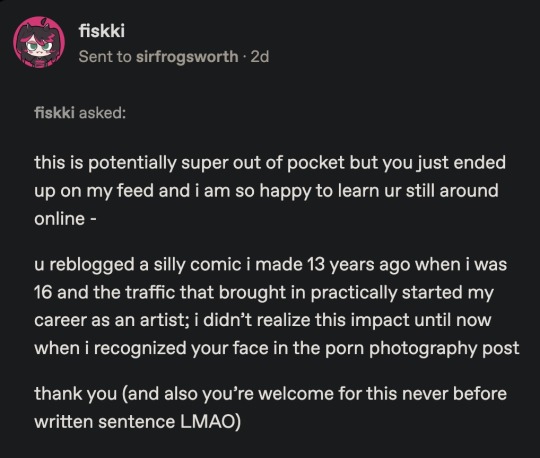
There are maybe 10 popular artists who I helped grow their audience early on. Just because I reblogged their work and added links to all of their social media. I even hired my best friend to add sourcing information to every post because I believed so much in good attribution.
Calling out AI art may feel good in the moment. You caught someone trying to trick people and it feels like justice. But, in most cases, the tangible benefits to real artists seem small. It impedes your ability to enjoy art without always being suspicious. And the risk of telling someone you think they make soulless slop doesn't seem worth it.
But putting that time and effort into attribution *would* be worth it. I have proven it time and time again.
I also think people should consider having a monthly art budget. I don't care if it is $5. But if we all commit to seeking out cool artists and being their collective patrons, we could really make a difference and keep real art alive. Just commit to finding a cool new artist every month and financially contributing to them in some way.
On a bigger scale I think advocating for universal basic income, art grants for education and creation, and government regulation of AI would all be helpful long term goals. Though I think our friends in Europe may have to take the lead on regulation at the moment.
So...
Stop worrying about enjoying or calling out AI art.
Demand better attribution from image sharing sites.
Make sure all art has a source listed.
Start an art budget.
Advocate for better regulations.
8K notes
·
View notes
Note
A lot of people are asking how I did my 80s sunglasses photo.
The simple answer... gradient lighting and a bendy arm.
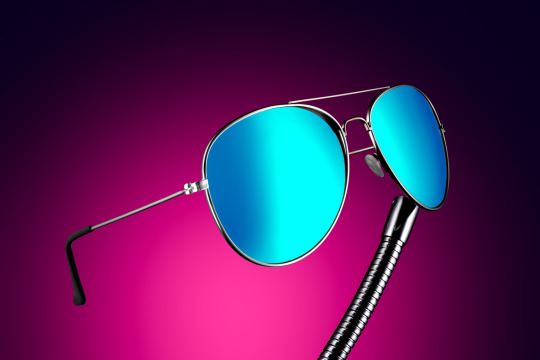
You take photo of the background by itself and then just erase the arm. Or you can just recreate the background with the gradient tool. That usually works best when you have a reference of the real thing.
Gradient lighting is advanced stuff. You need to educate yourself to do it well. And my photography mentor, Karl Taylor, is the best teacher on the internet.
He has some free videos on YouTube that get you started.
youtube
But his Visual Education platform is one of the best photography learning resources I've ever used. I learned more from him than any other teacher. And if you are serious about learning lighting, the subscription fee is worth every penny. He teaches how to photograph people, places, and things. But his specialty is lighting.
If you don't understand something after watching a video, you can leave a reply and he will personally answer your question.
The courses are all well organized and make chronological sense. There are beginner courses and highly advanced courses. And he does live streams where he just shows you his entire process. You just watch him do photography and problem solve.
The problem with free YouTube tutorials is you never know if the instructor is a competent teacher. The lessons are usually only for beginners because they get the most views. And you often learn things out of order.
When I joined Karl's site and had a more structured curriculum, my understanding of photography and light grew at an accelerated pace. The knowledge I gathered in a month dwarfed years of YouTube tutorials.
I know I sound like I am writing an ad for Karl, but I believe education is more important than anything else when it comes to photography. I've seen people buy a $2000 lens hoping to improve their images but scoff at paying for lessons because "YouTube is free."
All my images are still taken on a 10 year old APS-C DSLR. And I take consistently better photos than dentists with $10,000 Hasselblads.
Education trumps everything.
If you decide to try Visual Education, you'll notice Karl has top of the line gear. He is a renowned product photographer and that is expected of him. If he doesn't have that gear, his clients will go somewhere else.
Unfortunately, a lot of students will get frustrated and say they can't get the same results because they don't have Swiss Broncolor lights.
Don't fall into that trap.
Light is light. All the principles are the same with cheap Godox lights. These folks just need to recognize this stuff is complicated and it takes practice and experience to get high quality results. Every once in a while Karl will get frustrated by these comments and do a shoot with cheap speedlights and $5 makeup mirrors.
You need a camera, a lens, several lights, and diffusion material. Old and used is fine. Be patient and you will get it.
I love how you nerded out about lighting on a reddit post asking for help making porn because somebody recommended the wrong lighting for the job. Which makes me wonder: what does a dildo look like with gradient lighting?
Depends on the dildo.
Is it glossy or matte?
Objects have a spectrum of surface texture going from matte to glossy to mirrored.

Light reflects off these surfaces. Matte sufarces scatter or "diffuse" light. Glossy and mirrored surfaces directly reflect light. This is called specular reflection.
Gradient lighting is a bit of an illusion or lighting magic trick. You are essentially trying to simulate a diffused matte reflection onto a glossy or mirrored surface.
What happens when you take the diffused reflection of the matte ball and put it onto the chrome ball?
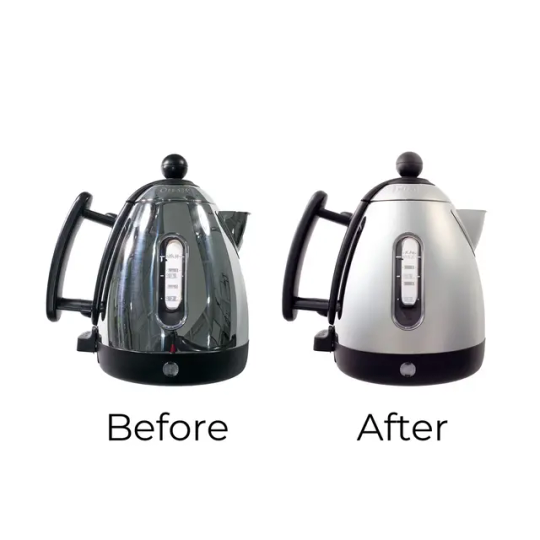
If your brain knows the object is glossy, the matte-looking reflection becomes more compelling. A bit otherworldly. People think it looks like a 3D render because when you are working with single glossy objects in 3D software, they are in a void with no environment to reflect off the surface—only an imaginary light source.
We have become conditioned to see this gradient effect as a "luxury" look. Which is why many high end watches, wines, and cosmetics use gradient lighting.

Gradient lighting is an image forming reflection. Essentially you shine a light into some diffusion material to create a hot spot in the middle with the light slowly fading out on the edges.
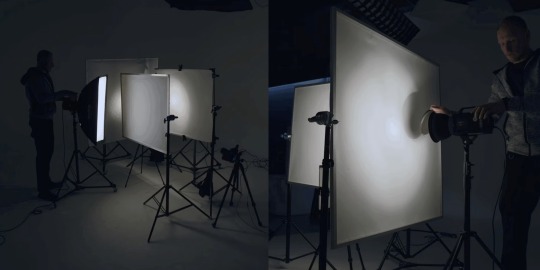
Typically a ball shape or a rectangular shape. You can make the edges softer or quite sharp. The possibilities are many.

The light source becomes the reflection.
Sometimes it is hard to wrap your head around that. Because objects are not flat mirrors. They have complex shapes. So the reflection of the light source becomes all wibbly wobbly, distorty worty.
You are literally transposing whatever shape gradient you create onto the glossy object. If I were to place my head in front of that gradient ball of light, my face would map onto the surface the same way.
It's very tricky to master and takes a lot of patience to get the angles right. And you have to make sure your gradient is big enough to reflect in all parts of your object.
I don't know if dildos are known to be glossy, so I'm not sure gradient lighting would do anything but make it look like a matte version of the dildo. Like, if you brain isn't expecting the object to be glossy, it may just assume it is matte with gradient lighting. It breaks the magic trick.
Which is why there is a technique where you have a gradient on one side and a more specular "glossy" reflection on the other side. It is done with wine bottles sometimes.

This maintains the glossy feel while still having that luxury gradient look.
So, I don't know if dildos woud be a great candidate for this kind of lighting. Advertisers probably aren't concerned with them looking like luxury products. Maybe if there was ever a Rolex dildo.
At a quick glance of dildo websites (for research purposes), the only ones I saw that were glossy were made of glass. Those might work. Or maybe there is someone who makes a chrome phallus.
Otherwise I would probably use more traditional lighting techniques for any future dildo photography.
424 notes
·
View notes
Text
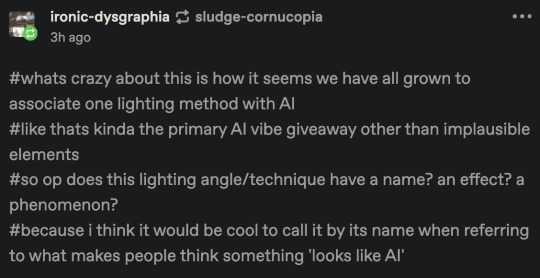
@ironic-dysgraphia
Most of my photos with artificial light added would be considered "unmotivated lighting." I think that is the term you were looking for.
The short explanation is that motivated lighting always has a logical source. Like the sun or a window or a lamp off to the side.
That doesn't mean there are no lighting shenanigans used.

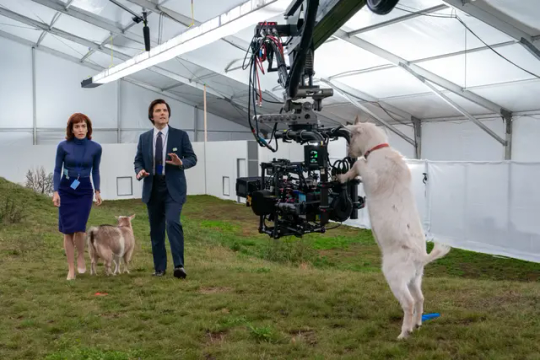
The overhead office-style fluorescent lights depicted in this scene were actually powerful diffused light bars that were much closer to the actors. They replaced the ceiling in post with more traiditioinal looking lights. So the lighting was still very crafted—but it has a logic and realism that doesn't set off alarm bells in your brain saying, "Where is the light coming from?"
Unmotivated lighting is the opposite. It's crafted, artificial light that doesn't need to make sense. It just has to achieve the aesthetic goal of the artist.
All studio lighting is unmotivated. I just re-edited this old photo of my dad.

There is no room in the world where he could have sat down and had perfectly sculpted light hitting his face. I intentionally directed the light to accentuate his features and capture the best, most idealized version of what he looked like.
Coincidentally I just wrote a post about motivated lighting in films.
Weirdly, I expressed a preference for motivated lighting in movies with a realism-based aesthetic and a lot of people disagreed. They said that the lighting comes from the same place as the music and that you just have to suspend your disbelief.
(Personally I think that is a bad analogy because music is *very* motivated by the emotional vibe. I would say unmotivated lighting in movies comes from the same place as women's apocalypse makeup.)
But I *love* unmotivated lighting in still photography. I love crafting an image and creating it in a fantasy realm where perfect, beautiful, sculpting light can come from anywhere. I want the most idyllic lighting possible.
It's the only way I could make fingernail clippers look beautiful.
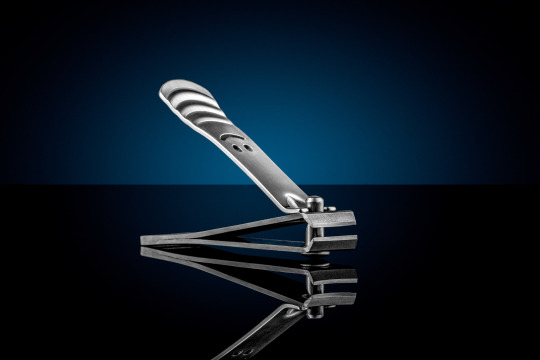
And now people are saying unmotivated lighting looks like AI or CGI and isn't authentic. Even though this aesthetic was created before computers were invented and the tools of post-capture manipulation were done in a darkroom.
I'm fairly certain this is because AI does not have a great understanding of motivated lighting. It never thinks about where the light is coming from so it almost always creates images where the lighting comes from a fantasy realm. And now people are heavily associating unmotivated lighting with AI, even if it is a subconscious observation.
I think at this point in time, people are yearning for authenticity. We know so much of our imagery is heavily manipulated for nefarious purposes. Beauty advertising with retouched skin like porcelain dolls and liquified torsos that don't leave space for vital organs. Every fast food ad shows the perfect juicy hamburger because they paid a food stylist $500/hour to perfectly cook and arrange things.
But fast food workers are not food stylists and your burger isn't going to have perfect lettuce and a non-smooshed bun.
(Before you reply with urban legends about food styling, they don't use fake materials. They are required to use the actual ingredients. Those myths came from movie prop masters who needed to maintain the look of food during hours of shooting.)
I think AI just turned our uncomfortable relationship with unrealistic imagery up to 11.
It's a little depressing for me because I love to use light as my artistic medium. I say I am a photographer, but my passion is more focused on lighting.
And I often incorporate my other passion, which is image manipulation. I sometimes add another layer of unreality to my images by artistically editing them.
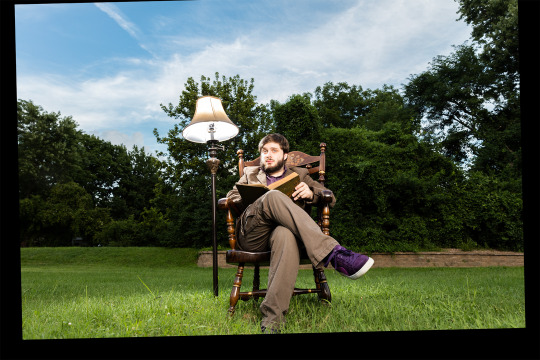
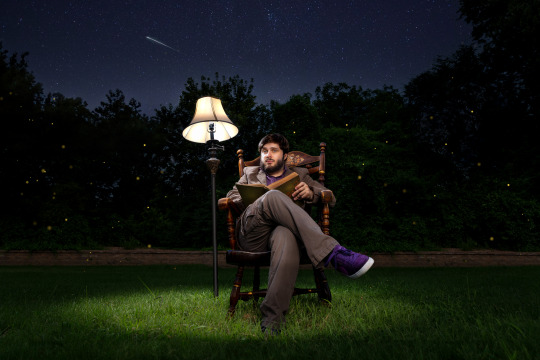
This is days of work.
I worked very hard for the in-camera image. Dragging a heavy chair and lighting equipment into a field on a hot summer day was not easy for me.
But I also worked very hard on the edit. The RAW file is overexposed, but once I corrected that, the lighting on him and the grass is actually what I captured. I hid a flash in the lampshade and lit him with my big 7 foot umbrella off to the right.
I could have shot this at night, but my area has so much light pollution, I would never have achieved the sky I wanted in my head. So I took the photo knowing I'd replace the sky later.
I like crafting images. I like picturing something in my head and then trying to manifest it in a photo.
I get why people are starting to prefer more natural looking images. I understand why they are currently preferring everything to be captured as it was in the moment. I know why they disparage the amazing work of CG artists and demand that every movie use only practical effects.
When everything is fake, a small dose of reality feels special.
But I see my photography more like a drawing or a painting. Light is my paintbrush and I am just trying to manifest my imagination into an image. I don't claim I don't use artificial light. I never say anything is "straight out of camera." I am very open about my use of Photoshop. If I were able to leave my house and go to more beautiful places, perhaps I would take a more motivated approach.
I mean, I love when the world is just beautiful all on its own and all I have to do is competently pick settings on my camera.
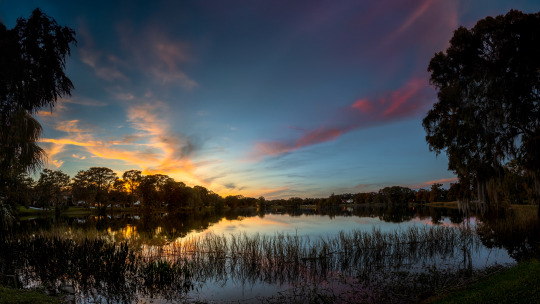
But I enjoy my artistic process and while some of my images may not be realistic, I think my artistry is always authentic.
I don't need every person to like every one of my photos. But when I work hard on a photo and there is clear talent and skill involved, I'm hoping people will still acknowledge that. I hope they will respect the effort and artistry involved.
I didn't enjoy the show Breaking Bad. I disliked all of the characters and the story just depressed me more and more as I watched it. But I still think it is an amazing show created by talented artists. I can acknowledge the monumental artistic achievement even if it wasn't my cup of tea.
That's all I'm asking.


Ironically, hard light is bad for recording sexy time.
It will highlight every pore, every vein, every wrinkle on your nutsack.
One day I will end this ring light fad. It is my ultimate side quest.
67K notes
·
View notes
Text
So... I'm the porn photography nerd guy now.
And a lot of people are happy to hear I am not dead.
I have not stopped posting in over a decade, but I sort of retired from the viral comedy I used to make, so I guess it makes sense that people haven't seen me around as much.
My personal tumblr is @sirfrogsworth where I post more frequently. And I have a photography Instagram here. But I promise I am still alive.
ANYWAY...
This post has made me think deeply about porn lighting.
And I thought even deeply-er about how I would actually light a porn.
I think it would be an interesting challenge but the one time I took a topless photo I was uncomfortable the entire time. I suppose that is something I'd have to get used to with experience, but I'm generally more interested in other types of photography.
But light is light, and I am always happy to help people get better results. I've even thought about starting a consulting business where I help people pick out lighting and gear and advise them how best to use it for their circumstances. I think there are a lot of small creators who could seriously up their production value with a small investment and some knowledge. YouTubers, streamers, and OF models who want an edge.
I'll try to give some general advice in this post. But if anyone is interested in a more specific solution, feel free to message me.
This post is about lighting entire bodies.
Quick review...
Large light source = soft light.
Small light source = hard light.
You can make a light larger by moving it closer, adding a modifier (softbox/umbrella), or bouncing it off a surface.
You make the light smaller by moving it farther away, adding a reflector, a grid, or a snoot.
Most lighting is designed for faces and maybe torsos. But when you need to light entire people, you are going to need more than a ring light. Ideally, you are going to want a light source at least as big as what you want to light. You'll notice a ring light is a little bigger than a face. A beauty dish covers head and shoulders. An octobox is roughly the size of a torso. After that, modifiers can get large and unwieldy, so you may have to think about bouncing light off walls and ceilings.
I was going to show some examples, but then I realized Tumblr would give me the naughty tag for this post. So I'll try to be creative about keeping this safe for work.
First, let's quickly expand on why ring lights are not ideal for photos and videos of entire bodies that are... comingling.
Ring lights are not bad. They were just designed to do something very specific. In the beginning, they were actually used by dentists to help photograph teeth without any shadows obstructing the view.
The magic of a ring light is shining light from all directions from the camera's POV in order to get a shadowless effect. You also get circle catchlights in the eyes which some people enjoy.
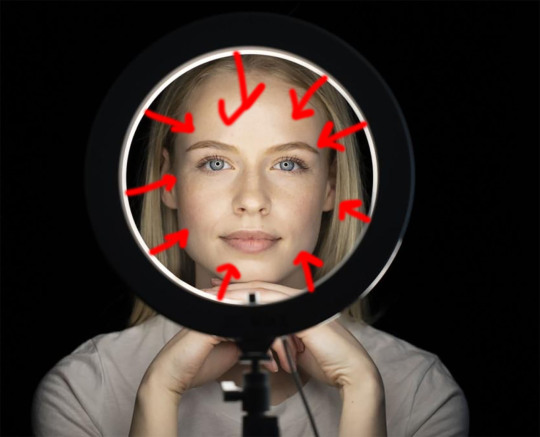
In order for this to work, the camera needs to be in the hole, and the light needs to be close enough to be directional.
The inverse square law says that when you move a light farther away, all of the photons start to spread out. Imagine a donut expanding inward. Eventually the hole in the middle closes up. It becomes no different than any other light at that distance. And since it has that hole in the middle, there is less surface area casting light.
Depending on the size of the ring light, you're only going to get those special, shadowless lighting properties for a head and chest photo. You might be able to get the boobies within the effect if you have a larger ring light, but it is mostly meant for faces.
Just to compare...
Ring light on the face, close up, with camera in the hole...

Ring light far away, off to the side, camera not in the hole...

You can see her. She is lit. But that ring light "magic" is no longer happening.
It's less flattering.
"Flattering" in the photography world just means that detail and textures are going to be less prominent. Flattering light is not inherently good or bad. If you want to show off a cool pattern or texture, or even a grizzled old man's face, you might actually want a hard light look. Hard light can also be very dramatic and boost contrast, but you may need heavy makeup or flawless skin (or just retouch it afterwards).
Small, hard light causes dark, crisp shadows. Think about what a wrinkle is. A fold in your skin causing a shadow. Think about what a pore is. A pit in your skin causing a shadow. The darker these shadows, the more apparent they are in the photo.
You can even enhance this effect by using "raking" light. Which is just hard light at a steep angle.
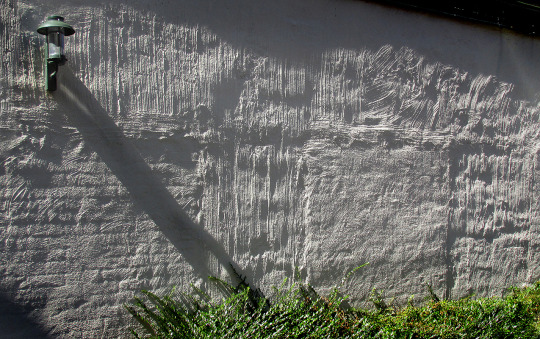
If you imagine this was a face or acne scarring or cellulite or a throbbing, veiny bicep, this might look rather unflattering.
Raking light is still useful in a lot of applications. Art conservators use raking light to analyze brush strokes on paintings.

So all types of light can be used for something cool, but unflattering light usually isn't ideal for skin without expertise on how to leverage it.
The good news... if you use your ring light straight on, even from a distance, you can minimize the crisp, hard shadows in places you don't want them. The more raking or off-axis the light, the more flaws will be exaggerated.
You can also attach a cheap shoot-through umbrella to enlarge the light source and soften it.
The bad news... small far away lights increase specular reflections. If you have shiny skin, this may cause big spots of glare. It can also reflect harshly off moisture. And if you are hot and sweaty... for reasons... you might end up looking a little rough.
John Mulaney discovered this when he gave an outdoor speech in front of a distant spotlight.

People thought he was back on drugs.
Nope!
It was just a warm night and hard light reflects sweat and moisture very intensely.
The next day under soft studio lights, he either sobered up overnight...

Or people sometimes fail to realize just how much lighting can affect one's appearance. (This was during a rehearsal so he wasn't even wearing makeup yet.)
Soft light is flattering because it reduces and fills in shadows and evens out specular highlights.
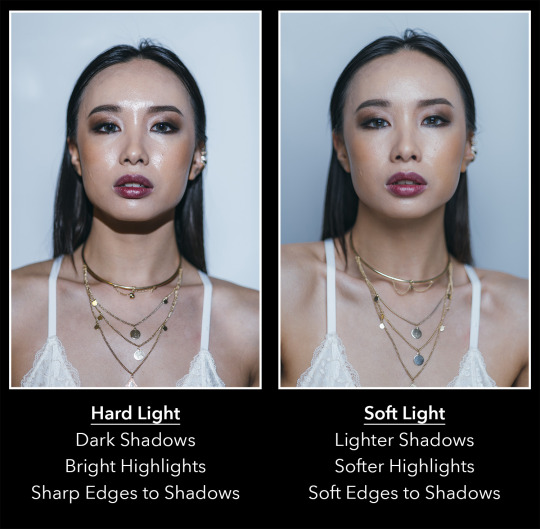
Many people think diffused light is soft light. But any large light source will produce soft light. Diffusion is just a tool to help create a larger light source.
But if you put diffusion on a tiny light...

It ain't going to be soft.
People also assume that soft, flattering light is "better" and that isn't always the case. Sometimes soft light is kinda boring.

The hard light photo is much more interesting and dramatic, but you can already see how much shinier her forehead is. If her photo was taken with hard light directly after... sweaty activities... it would probably not be as appealing.
And that is why most pornography is blasted with soft light.
If you actually ignore the porn and pay attention to the quality of the lighting, it is usually pretty boring and flat. But it is very soft and very shadowless.
I call this "sitcom lighting."

Light is blasted everywhere from all directions. Sitcoms did this because they needed every place on the set to have adequate lighting for every camera position.
I suspect porn adopted sitcom lighting for two reasons.
1.) Porn directors want you to be able to see *everything* very clearly no matter what angle they point the camera. No body part is to be mired in shadow.
2.) If you blast light from every direction, you get a super ring light effect where all shadows are minimal. So wrinkles, pores, veins, sweat, moisture are all reduced. It's super flattering but a little dull.
This is accomplished in a few ways.
Have you ever noticed a lot of higher budget porn videos take place in nice rented houses with a ton of windows?
Ted Cruz knows what I'm talking about.
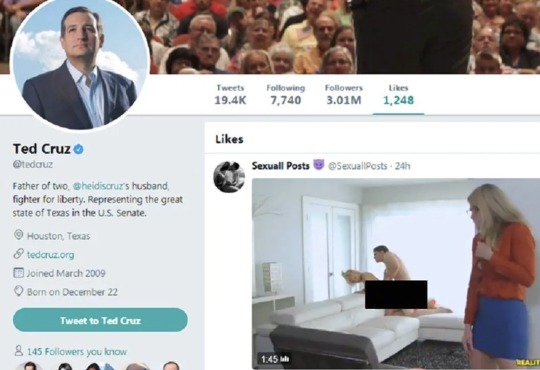
That's because all of that window lighting is essentially one big light source.

Imagine those windows as softboxes. You are just filling the room with soft sunlight. But if you actually go outside, the sun becomes a small light source with harsh shadows. You need the windows to "modify" the light and make it large and homogenous.
So if you have access to a space with a lot of windows and you don't mind being naked in front of them, you're all set to porn.
The next technique is to just use huge softboxes and umbrellas all around the room.

This is my 7 foot umbrella that I got for under a hundred bucks.
I mainly use it for outdoor lighting.

But, I mean... it'd be great for other stuff too.
And then there is bouncing light. This is how you get truly huge light sources. You can shoot lights into walls or up into the ceiling. This is especially good for videos in bed.
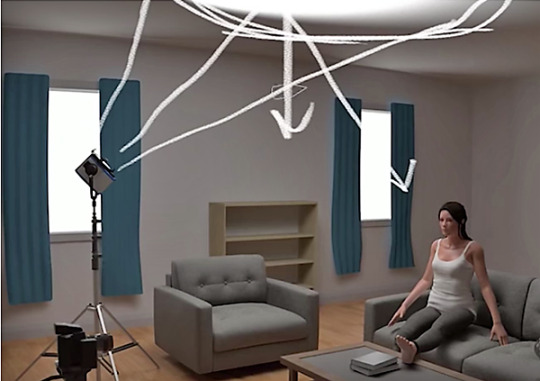
You can combine window lights, giant umbrellas, and bounce lights if you want.
I was watching a Gerald Undone video where he toured the Gamers Nexus studio. Steve clearly didn't know anything about lighting. And so he just put lights EVERYWHERE from every direction.

He accidentally porn lit his studio.

One difference you might notice between Steve and the young woman who is innocently talking on the phone and definitely not about to have sex with her stepbrother...
She seems a little more... smooth.
A little less... 4K.
Enter soft focus filters!

Soft focus is sometimes called the Vaseline effect or the Barbara Walters effect.

This is a filter you can put on your lens to knock the detail back a bit. It keeps everything in focus, but smooths out the edges a bit.
An optical Facetune, if you will.
It tends to look a little more organic and authentic than digital smoothing. But you have to pick the right strength or you will end up making everyone seem like they are glowing like Barbara.
If I am being honest, I don't really like standard porn lighting. But it is hard to suggest something better. Video is just difficult to light artistically without a budget and a lighting expert. When you look at how movies are lit behind the scenes, you can see how complicated it can get.

So I'm afraid I can't give specific advice on how to artistically light porn. It depends on the room and the vibe and what gear you have to work with.
The best I can do is to advise you to get a very large light source as your main light. If you don't have a large white wall or ceiling, you'll want a 7 foot umbrella or the biggest softbox you can afford. And then I would add backlighting. I think that is the element a lot of porn is missing. Shining light from behind and creating nice highlights can really elevate things. You can even make the lights part of the video.
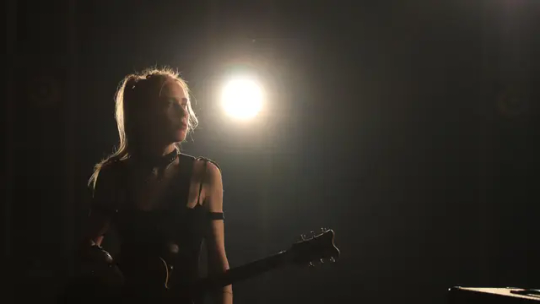
Erotic still photography is a little easier to pull off without much experience.
There are two popular forms of boudoir photography.
There is dramatic side lighting as you can see with this pussy.

And there is more environmental erotica where you decorate a room like a theater set or find a fancy hotel.
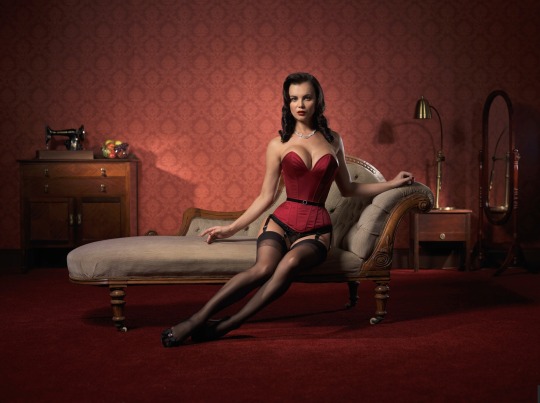
So you can make the lighting cool or the environment cool. Or both.
But if you don't have good lighting and you don't have a cool environment, there is one more aspect that can improve your nudes.
Angles and posing.
I'm afraid this is a concept lost on a lot of straight men—as demonstrated by Reece in this dick pic parody.

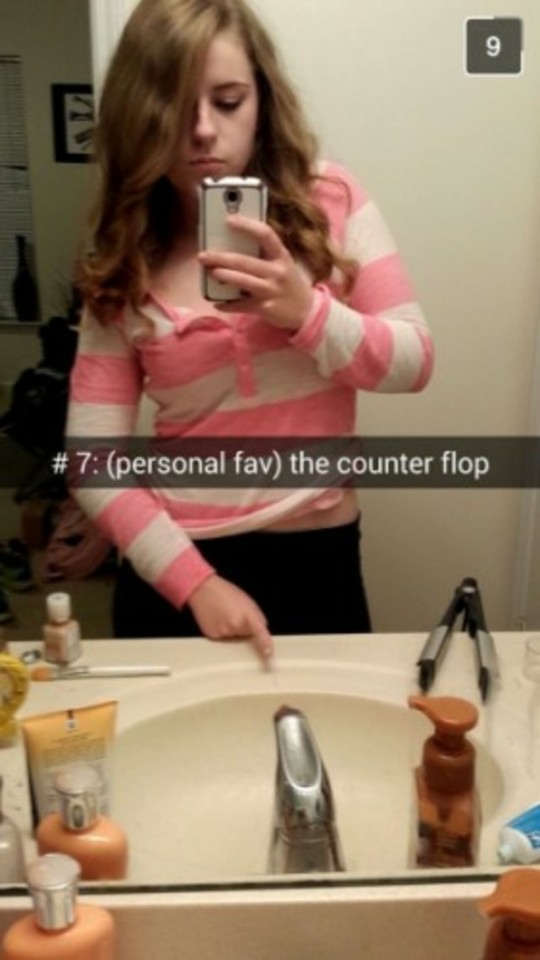
Finding good angles and choosing good poses can often overcome bad lighting. The easiest thing to do is copy someone else. Find a pose you like and try to recreate it.
And learn how to take pictures without holding your phone. Get a tripod or a phone stand. There are very few sexy poses you can accomplish when you are tethered to your phone. And if you move the phone a little farther away, you can avoid distortion as well.
And now for my most important advice...
NO MACRO PHOTOS OF YOUR JUNK.
If a doctor could diagnose a medical condition, it's too close.
Most people enjoy seeing nude photos in the context of your entire... you. Your eyes, your smile, your belly, and your various private areas.
Unless the intended audience is specifically into detached, close up photos of your bits and holes, it is usually best to keep things zoomed out. Communicate and verify before shoving a camera between your legs.
I'm just saying, when I can see past someone's asterisk directly into their colon... my light gets soft.
None of this answers the question... how would I light porn?
I'd probably delve into experimental lighting. There is this lighting technique where you put a black background directly behind your subject and block the light so it can only peek around the sides. It creates this perfect outline of whatever you are photographing.
This is my pocket knife sitting on top of a light.
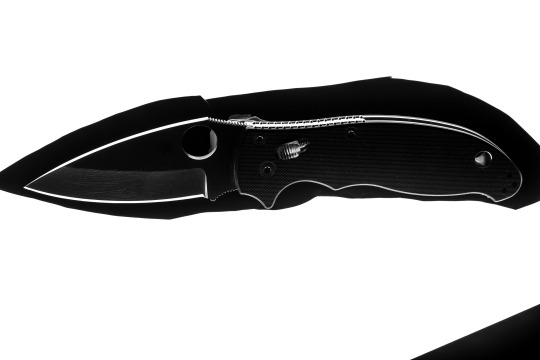
And then in post processing, you just expand the black to the edges of the frame.

I want to try and upscale this effect to work on humans.
Okay, that's a lie.
I mostly want to try it on fuzzy cats.
But naked humans might also look cool.
And I'm just imagining if I were to make a video of two people... wrestling... it would look like two human shaped outlines were merging and separating in all kinds of interesting ways.
So the people would just kinda look like this, but it would be an in-camera effect.
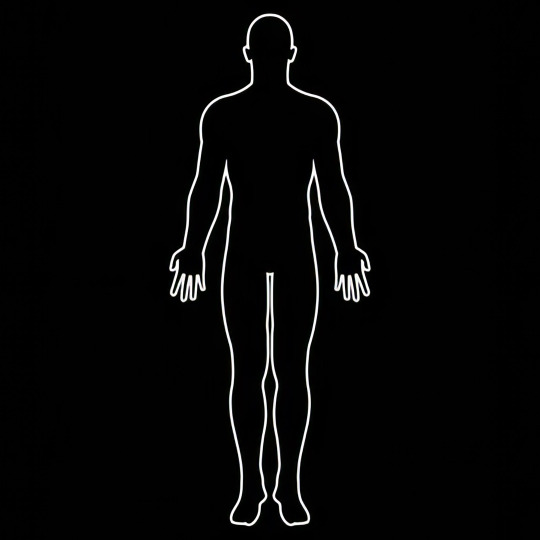
I dunno, I think that would be cool.
If you want to learn more about light...
This is a really cool post I wrote about the Inverse Square Law. I know it sounds mathmatical and complicated, but I promise it is not. And it will help you improvise lighting solutions with a lot less trial and error.
In this post I explain more about hard and soft light. I also go more in depth about ring lights and what to do if you already bought one.
And in this post I recommend pro lights as well as budget lights and even some DIY lighting solutions.
In that post I link to a big round streamer light, but it is for the white version, which is not in stock yet. The black version is available right now.
I hope some of this was enlightening.
Go forth and porn.


Ironically, hard light is bad for recording sexy time.
It will highlight every pore, every vein, every wrinkle on your nutsack.
One day I will end this ring light fad. It is my ultimate side quest.
67K notes
·
View notes
Text
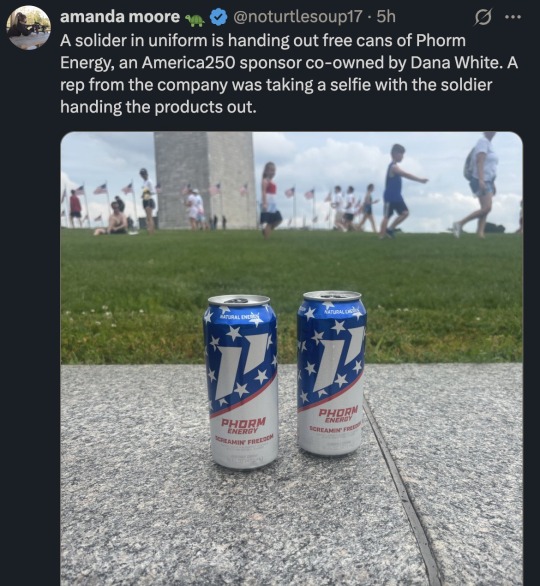
This must be the worst energy drink in existence.
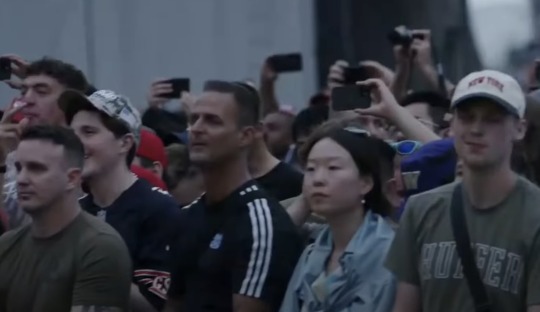
The lowest energy crowd I've ever seen.
For one of the final acts, a walking corpse came on stage.
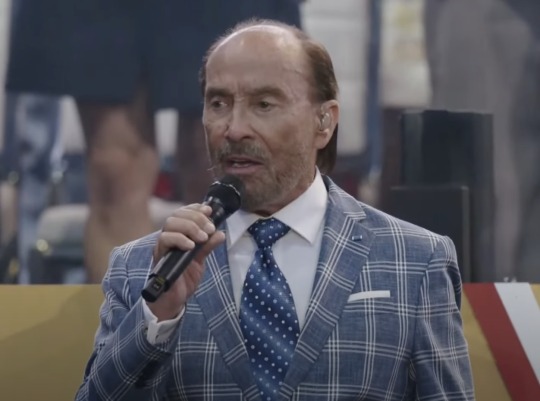
Turns out that corpse was Lee Greenwood, famous singer of "God Bless the USA."
He used up a fresh bottle of Just For Men and doesn't look a day over 112.
He kept trying to get the crowd into his song and he was getting frustrated that they weren't hyped to see an octogenarian sing.
He yelled, "Sing it with me!"
And they cut to Trump and his birthday entourage.
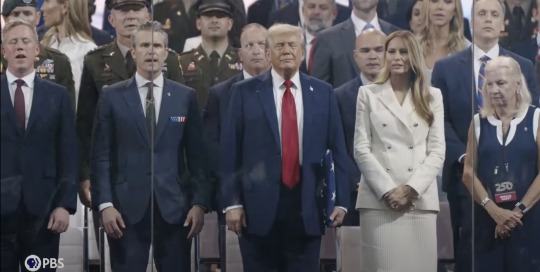
Very lively.
Pete sang along though. He was the only one.
Then Lee yelled, "Light up your cell phones!"
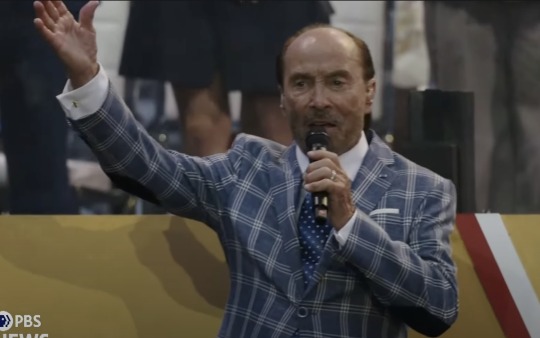
And then, finally, he won the crowd over and everyone swayed in unison—creating a majestic light show.
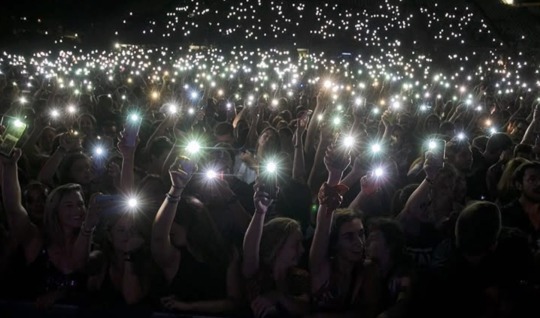
I'm just kidding.
8 people did it.
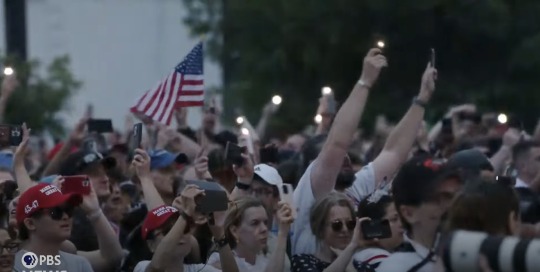
The night ended with a very lackluster fireworks show intercut with a military propaganda video.
And then everyone just kinda shuffled away.
I'm pretty sure Trump wanted a North Korea-style spectacle.

And instead he got the world's slowest truck.

He was having trouble hiding his disappointment.

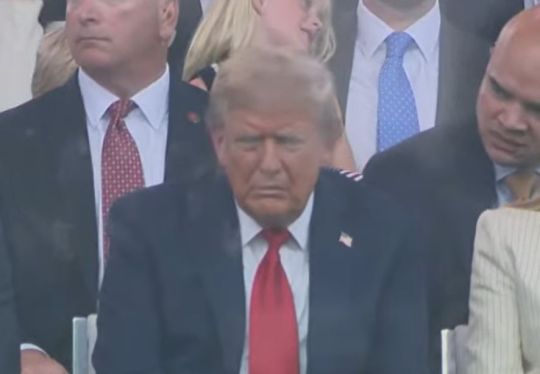
What a waste.
This parade is one of the most thrown-together low-energy events I've ever seen. Our high school float parade had more enthusiasm.
The best part... Trump is bored out of his skull.
Though every once in a while he stands up and salutes.
It's really weird.
Also, they just paused the presentation to thank a sponsor.

Classy.
7K notes
·
View notes
Text
I've been liveblogging the parade.
It's like watching our tax money be set on fire.
They just had robot dogs.
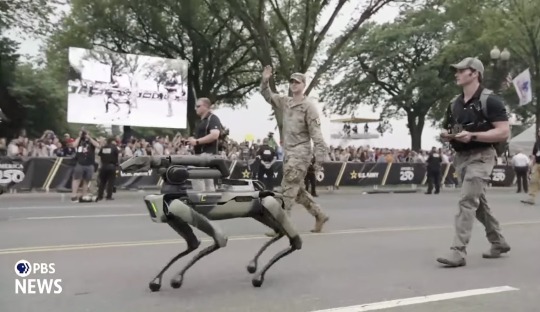
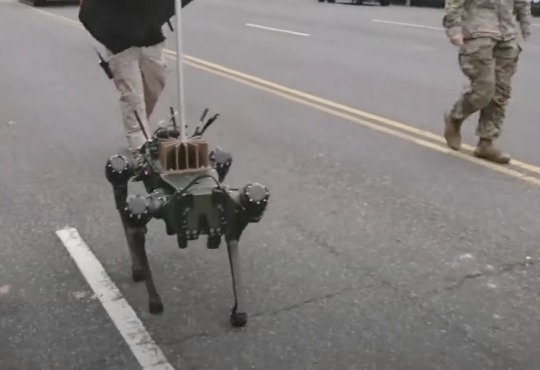
Trump did not salute the robot dogs.
Also, Lockheed Martin is the new sponsor.
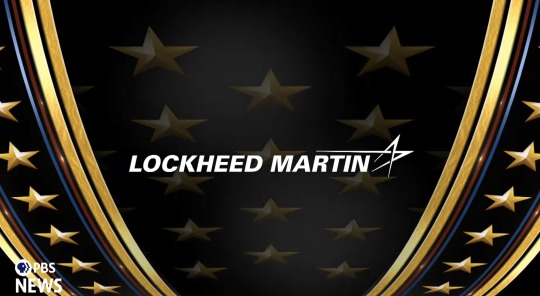
The US government is their biggest customer. 70% of their income is from the Department of Defense.
"Sure, we'll use some of the money you paid us to help pay for your little parade."
It's like a financial auroboros.
This parade is one of the most thrown-together low-energy events I've ever seen. Our high school float parade had more enthusiasm.
The best part... Trump is bored out of his skull.
Though every once in a while he stands up and salutes.
It's really weird.
Also, they just paused the presentation to thank a sponsor.

Classy.
7K notes
·
View notes
Text
These days it seems like people just *want* to hate things.
They never root for things to be good anymore.
They hyperanalyze a few seconds of a trailer and say a movie is horrible before they've even seen it.
Not everyone digs James Gunn's style. That's fine. But I love that he takes bold creative risks. I love that he subverted Marvel's flat color grading and used bright saturated colors.
And I love that he subverted DCs ultra grim dark aesthetic and allowed Superman to have a hopeful and more optimistic color scheme and lighting.
And a bunch of anime nerds getting angry at an obvious anime reference is... confusing.
Related: Patrick Willems did a great video on movies and flying.
youtube
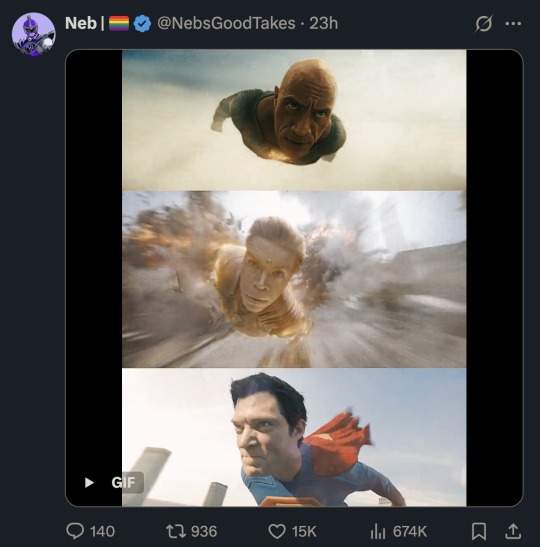
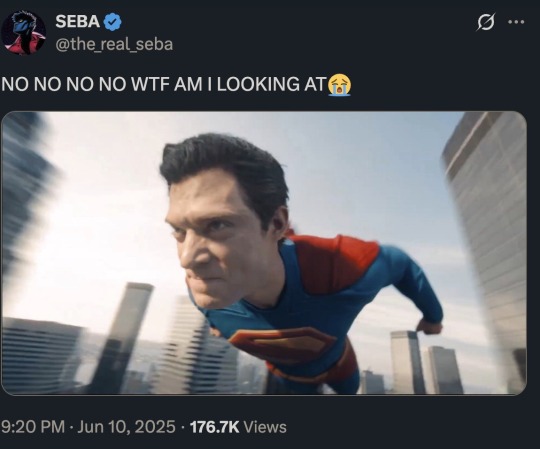
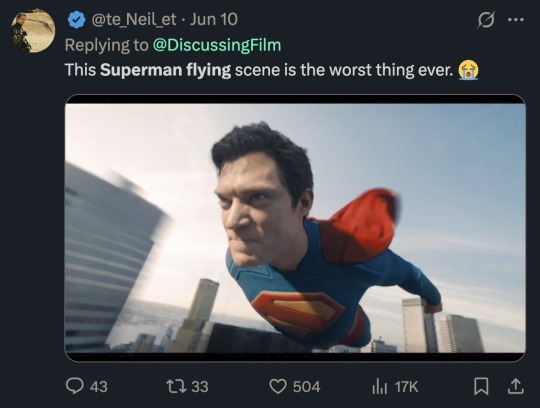
Wide angle lenses distort the image so close things are big and far things are small.
I personally think this is a really cool creative choice because wide angle lenses are great at depicting speed. The large stuff turns into tiny stuff very rapidly.
You can even do it with still photography.
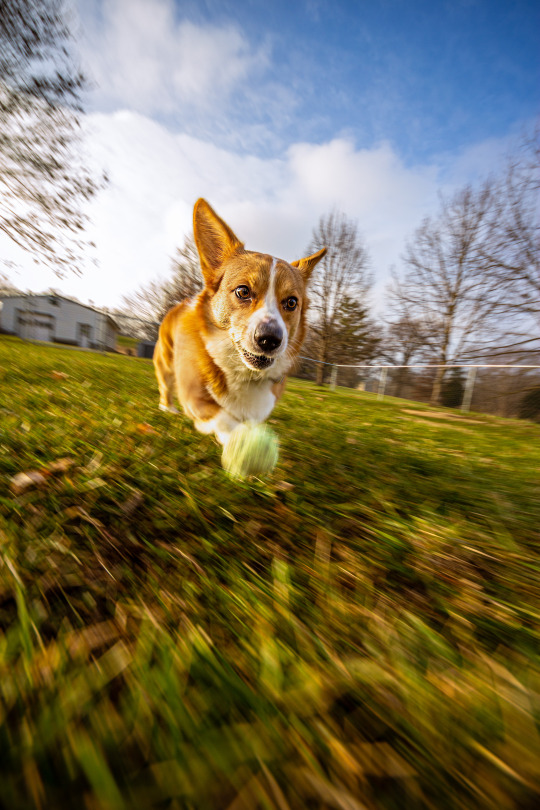
It's like how your sense of speed changes from a car to a go-kart. The car is going faster, but the go kart *feels* faster just because of your change in perspective.
It's weird that people with anime avatars are complaining about this effect because this is how flight is depicted in many shows.
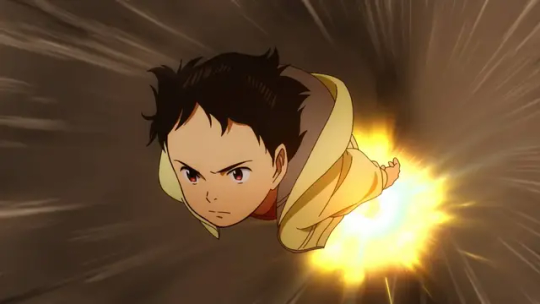
And I also hate this trend of singling out a frame of video. You cannot judge video that way. It removes the entire context.
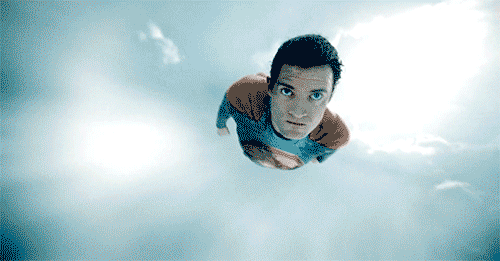
I think that looks cool. It's very similar to FPV drone footage and I think that grounds it to a reality we are familiar with.
The Superman flying scenes immediately reminded me of the world's fastest drone vs an F1 car video.
The sense of speed would not have been as impactful and immersive without the wide perspective.
I love wide angle.
My ultra wide angle lens is the most fun lens of all my lenses.
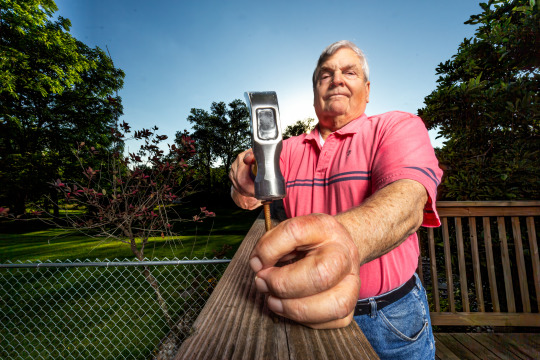
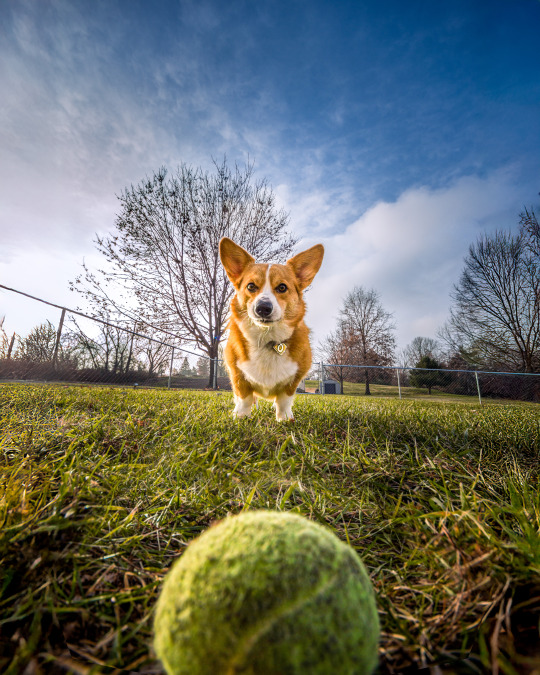
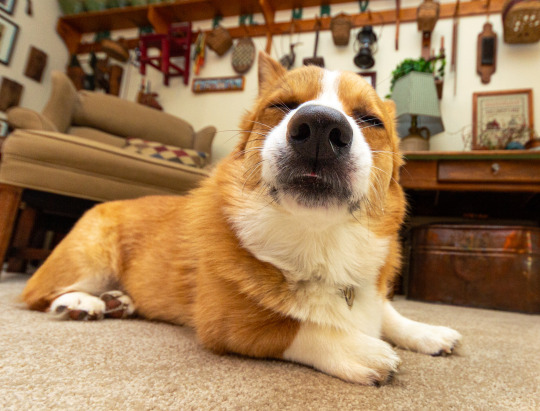
Embrace the ultra wide!
321 notes
·
View notes
Text
JD Vance: Is this the one where they follow a group of young New York City artists during the peak of the AIDS crisis? Where the original cast featured Idina Menzel seven years before her breakout role as Elphiba in Wicked?
Usha: [hysterical laughter]
Whoops! That's apparently a different thing called "Rent." Probably some gay DEI show I've definitely never heard of!
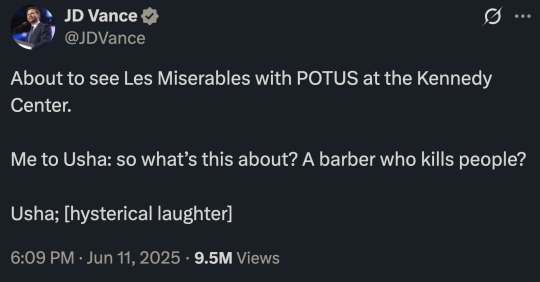

Trump is oblivious to the fact that he loves entertainment that is very popular with gay men. And now he is dragging JD Vance with him and JD is trying way too hard to signal he doesn't want to be there.
"I DON'T KNOW ANYTHING ABOUT THE GAY MUSICALS! HAHAHAHAHA! HERE IS A DETAIL ABOUT A GAY MUSICAL THAT I WOULD ONLY KNOW IF I HAD SEEN THAT GAY MUSICAL. AHAHAHAHA. PLEASE LAUGH AT MY FUNNY JOKE, WIFE. I AM NOT GAY. PLEASE DON'T PUT IN THE NEWSPAPER THAT I AM GAY."
Meanwhile, Trump...
"I love YMCA. It's the greatest song ever recorded. The Village People were the last great band. Very catchy beats, from the standpoint of dancing. And I love that they were just regular working class guys with normal jobs. I tried to hire the construction worker to build Trump Tower, but he told me that wasn't the kind of tower he was into.
Broadway musicals are the highest form of entertainment from the standpoint of making me feel things. Les Mis, such a beautiful play. It's about bread, can you believe it? A whole musical about bread! You gotta pay for your bread, folks. Just give them $200 or whatever bread costs, show them your ID for buying groceries, and then you don't have to worry about the bread police, okay?
Later we're going to a wonderful bar called "The Bulge." Isn't that a funny name? I assume that is because all the men have big bulging muscles. Very fit, these guys. You'll never see more manly men. Very strong, very shiny guys. They could probably lift some heavy stuff, from the standpoint of weight.
Not quite as manly as the people over at Lumberjacked. Those are some very very hairy men. Very manly. Very good at handling wood, or so they tell me. The lumber industry is very important. 900% tariffs. We're bringing wood handling back to America.
They play a lot of Elton John there. My favorite musician and a great dresser, from the standpoint of sparkles. Lotta sparkly outfits, I love it."
1K notes
·
View notes
Text
That is a perfect example of a good use of the VAERS system (ATM machine? chai tea?). It's important to document everything so they can detect patterns in the data. Most reports are mild symptoms or just coincidences. But they want to have as much data as possible. Which is why your doctor was correct to advise you to report it.
I'm going to copy/paste some of my replies...

VAERS does allow self reporting, but most of the time it is a medical professional who does it. (Ironically, that fact is often used by anti-vaxxers to lend their claims more credibility. “Doctors are reporting this! Not crazy people!” without any context.)
People misunderstand the point of VAERS. The system isn’t about proving causality. It’s about gathering a large, messy pool of symptoms so patterns can be found. And they want to know the smallest symptoms along with the more serious ones. They want to know seemingly unrelated symptoms too, just in case that assessment is in error or there is an interaction with something else.
Even if there is a tiny chance of a vaccine being related, they want to know about it.
If someone has mild arm pain, that might be connected to people with a more severe reaction. Or many people might get mild arm pain and so the vaccine manufacturers can warn people, "Hey, your arm may hurt for a day or two, this is normal, plan accordingly." That kind of transparency helps reduce panic. When people know what to expect, they’re less likely to freak out over harmless symptoms.
In short, the need for lots of data is being used against researchers. Any large dataset will have noise. Scientists know this. They use statistical tools to filter it out. But anti-vaxxers lump together all the noise—the mild, the unrelated, and the rare serious events—and present it as one big scary number.
Anti-vaxxers include the noise, the mild symptoms, and the rare serious ones all together in their bogus statistics and don't bother to differentiate. Mild arm pain goes in the same bucket as death. Unrelated sniffles go in the same bucket as blood clots. And then they set the bar at 100% safe, which no medicine can claim.
There is no medical intervention in history that is 100% safe. We'd have no medicine at all if we required that kind of certainty.
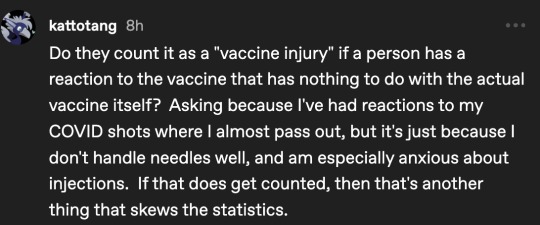
VAERS only labels things as "adverse events." That does not mean the vaccine was the cause. They want as much data as possible so they can see patterns. You could report your experience and even say, "I think this is because of my needle anxiety," and they would still be happy to have that data, just in case you were wrong about the cause and there is a larger pattern.
Many of the VAERS reports are unrelated symptoms. But that data can still be valuable to know. It can help them rule things out. It can warn them of possible interactions. Or it can just help them build better filters for noise in the data.
Unfortunately, anti-vaxxers label any adverse event as a "vaccine injury" even if it was classified as unrelated. They don't differentiate getting the sniffles with death. They are using this amazing research tool in bad faith.
----------------------
VAERS is not just interested in the serious events. They want to be able to warn people of any symptoms and relieve anxiety if they are mild or part of the process. If your wife knew ahead of time that swelling may happen, I'm guessing that would have been comforting knowledge. If she knew everyone who had a similar reaction was fine and recovered quickly, she wouldn't go into a panic spiral and wonder if she should go to urgent care or the ER.
One thing both sides kinda get wrong is the reporting aspect.
The Left often assumes VAERS is flooded with reports from conspiracy theorists blaming vaccines for every bad thing that happens afterward. In reality, about 25% of reports are submitted by patients, parents, or loved ones. Most of those are in good faith, often at the recommendation of a medical professional. Yes, a small portion may come from conspiracy dipshits, but data scientists are trained to filter that noise. Self reporting data is still valuable and we shouldn't discourage it or claim it is all anti-vax nutballs fucking up the system.
People on the Right often assume that because most reports are submitted by medical professionals, it proves the events were caused by vaccines. But professionals submit reports even when they suspect the vaccine had nothing to do with it. Because more data is better data. These reports help identify rare complications, yes—but they also help build a comprehensive database of expected side effects. The irony is that this system doesn't expose some horrible vaccine doom. It actually makes vaccines safer and allows doctors to provide better guidance and care.
It's a great tool that produces a lot of good information to help people make decisions about their vaccinations.
And it is being weaponized by anti-vaccine zealots.


I do not have any data on how much of that number is gum theft and how much is murder. But I am still very concerned.
VAERS receives about ~1.26 million adverse event reports per year.
An adverse event report does not mean the vaccine was at fault. The event just happened near the time a vaccine was administered.
~5000 of these events are serious and require hospitalization.
In the last 10 years there have been 9 confirmed deaths involving a complication with a vaccine (along with other factors) out of over 4 billion doses.
Even if that bullshit number was accurate, that would mean 2,665,787 injuries versus 9 deaths.
435 notes
·
View notes
Text
I will now attempt to build a banana.
First, I will study the banana.
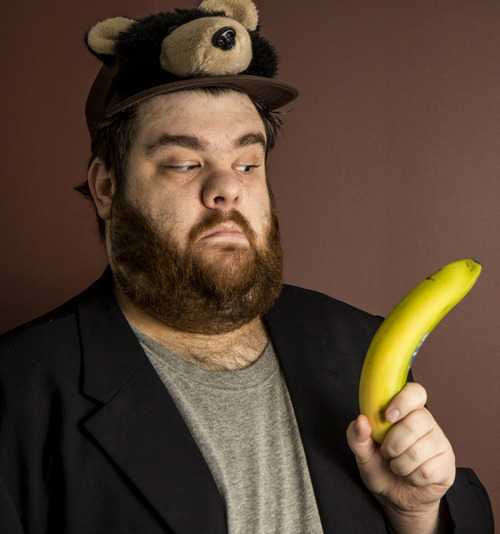
Next, I will start the banana building ritual.
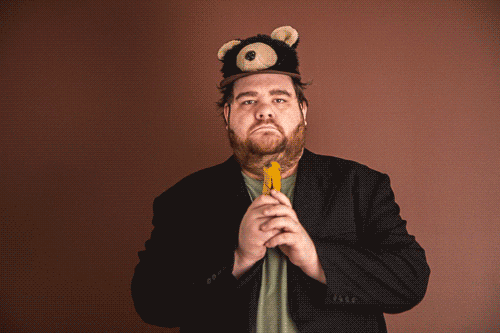
Now I will become the banana.
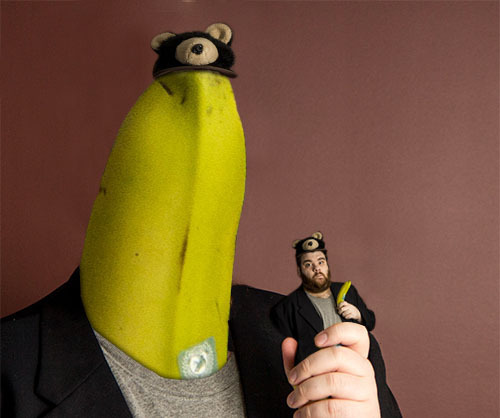
Something has gone awry.
Please send assistance.

I knew outsourcing all of our banana factories would come back to bite us in the potassium.
31K notes
·
View notes
Text
Small but very confusing correction.
On laptops and phones, the brightness setting is as I described. You adjust it to the ambient light levels in your room.
On some LED TVs the ambient light adjustment is called "backlight."
If you have a backlight setting, that usually means the "Brightness" is actually the black point adjustment. That is how you increase or decrease shadow detail.
And on OLED TVs... LG models call it "OLED Light"
Sony and Samsung call it "Brightness"
They basically made things as confusing and different as humanly possible.
If you have a specific device and you aren't sure, feel free to message me and I will help you figure it out.
Let's talk about screens and eye comfort.
@krakenartificer wrote this in response to my motivated lighting post.
Maximum-visibility lighting is also accessible lighting. I cannot turn the brightness on my screen up any more than it is -- even a few seconds of a light-mode app at 75% brightness will give me a migraine. I believe you when you say that the train-light photos are legible to you. But with my screen at ~50% brightness in a medium-dim room, that second one, with the bright-white light, is already painful to look at. And since my pupils have constricted to protect me, I can't see almost anything else going on there.
I already mentioned that if people are having issues seeing dark elements in their content, their room may be too bright. That is a strategy to get the highest quality viewing experience, but it may not be the most comfortable for people with various eye sensitivities.
So I'm going to address eye comfort over image quality in this post.
I think many people have a misconception about the brightness setting on their display. Often people will turn it up and down depending on the content they are viewing. If something has a really bright element, they may turn it down. If something is too dark, they may turn it up.
That isn't really how display brightness is meant to work. This setting is meant to maintain picture quality and contrast as much as possible while raising and lowering the overall intensity of the display. And the intensity is meant to be adjusted according to the viewer's environment, not what is on the screen from moment to moment.
You want the intensity of light in the room to match the brightness of your screen.
Some people prefer to adjust their screen a little brighter than ambient so it is a little more legible. But that is a personal preference.
So if you are in a dark room, you'd turn the brightness down.
If you are out in bright sun, you'd turn your brightness up.
If your screen is displaying near white or pure white and it hurts your eyes, that usually means your room is too dark. A brighter ambient environment can help make "light mode" more comfortable. Try turning on some lights or going to a brighter space and see if it helps.
However, some people do not feel comfortable in brighter rooms. This is when you might consider "bias lighting." This is a soft light source behind your screen that you can adjust to the maximum tolerable brightness to keep your eyes from going into night vision mode or max dilation.

It's better if the bias lighting is spread out rather than using a small light source like a night light. Small light sources feel much more intense and can add to eye strain. You want the light to cover a large surface area.
String lights across a wall work well.

Or you can bounce a light off a wall or ceiling to diffuse and spread it out. Many people just put a light behind their TV and light up the wall behind it.

The idea is to make the room *feel* dark while still having enough light to keep your pupils from opening up and feeling like any sudden bright light source is blasting you in the eyeballs. Your pupils prefer gradual adjustments to light and dark. If you go straight from a dark scene to a bright scene without any bias lighting, your eyes might feel a bit melty.
If you are *still* uncomfortable with white on your screen and have a particularly strong eye sensitivity, then you might consider sacrificing picture quality for comfort.
Turning down your brightness is not a great solution because it makes *everything* darker. Again, the brightness of your screen should be close to the room lighting.
Typically, to get the highest quality image you want to adjust your screen so the blacks are as black as possible and the whites are as white as possible without losing any detail.
Rtings has a guide for monitors and TVs for this.
They have two patterns for black and white point adjustment.
They look like this.

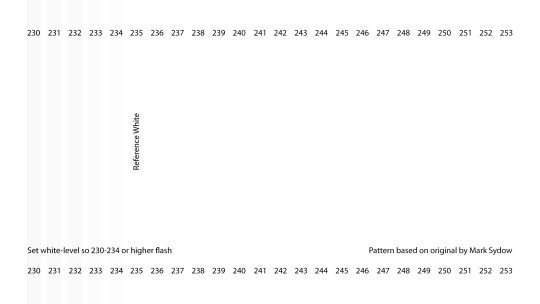
You want to see bars all the way up until the reference point.
The white point is most commonly called "contrast" in display settings. Sometimes there will be a contrast adjustment AND a white point adjustment. In that case, the white point only deals with the brightest highlights and the contrast will affect all whites.
But if you have really sensitive eyes... forget the charts. Forget peak image quality.
Instead, try lowering your contrast and reducing the intensity of *only* the white elements rather than darkening everything.
The picture might look a little gray and dull, but you won't lose as much legibility in the shadow areas. You are just turning down the brightest stuff to make your eyes more comfy.
Max white point...

Lowered white point...

And if you still need to turn down your screen brightness, you can raise the black point to keep more detail in the shadows.
Again, that might not look great, but it will keep your eyes comfortable and you will be able to make out all the details you need to see.
You might also consider adjusting the color temperature of your screen to be warmer. Blue light is higher frequency and more energetic. Which means it can pierce and glare more than warmer light. So shifting things to the orange could also bring some comfort to sensitive eyes. Search for a “Warm” mode, “Eye Comfort” mode, or Night Shift settings.
Most TVs and monitors have these adjustments. Sometimes they call them different things, so you may have to do some googling. (God forbid tech companies ever agree on a standard.)
And if you are on a phone or laptop, you may need a special app to adjust these specific things. I would research "how to reduce white point" for whatever device you are using.
To review...
Adjust your ambient room lighting first. Brighter ambient room lighting can make bright white elements on your display more comfortable.
Display "brightness" should be adjusted to your lighting environment, not the content on screen.
If you don't like bright rooms, bias lighting behind your display can keep your eyes from going into night vision mode. This can prevent bright screen elements from being too intense or glaring.
If you have eye sensitivity issues, try all of the above first, and then consider lowering your contrast or white point setting. This will dim only the brightest elements on screen without making everything else too dark.
If you need to lower the screen brightness AND white point/contrast, you may lose detail in the shadows as well. You can try raising the black point to compensate. This is a worst case scenario and will probably not look great.
Consider warmer color temperature settings to reduce glare from high-frequency blue light.
420 notes
·
View notes
Text
You are not alone in that. Display settings still confuse me despite hours and hours of research. I was just on the phone with tech support trying to figure out how to use my new color calibrator and trying to figure out if it was okay to use the "P3 color space."
Adjusting your screen should not be this hard.
I'm afraid a big part of the problem stems from a Japanese technology philosophy where they prioritize legacy features and old ways of doing things. Tradition is a very big deal in companies like Sony, Panasonic, and Toshiba and they were the biggest influences on how modern displays operate. And even though Samsung and LG have become the leading manufacturers, that traditional philosophy got sort of locked in.
This is especially true in the camera industry as well. Smartphones have reinvented how most people approach photography, but the Japanese camera companies refuse to evolve their approach with the bigger ILC cameras. The menus use a lot of outdated terminology. They refuse to use smartphone operating systems. They offer almost no image processing features. And transferring images usually requires pulling a little card out of the camera, sticking it into a USB reader, and copying everything to your computer drive. Whereas smartphones put everything on the cloud a second after the photo is taken.
TVs and displays have a lot of the same issues. They use a lot of legacy terminology and have confusing menus and they do a poor job of informing users how to configure their screens. Which is why a lot of folks just have to guess about which buttons to push or which settings to change.
Or there is a fear that if people change a setting, they might make things worse and won't know how to change it back.
The contrast setting made sense on a tube based television. It functioned more like the slider in a photo editing app. But when TVs went to LED tech, they were already tuned to be as contrasty as possible. So the contrast setting just ended up dimming the whites.
And many people aren't used to having a functional brightness setting. TVs used to be so dim, everyone just left it at 100%. Now displays are up to 10 times brighter (which is great for using in daylight) but no one is told how you are supposed to use the setting to match the ambient light.
It should be thought of more like a volume knob on a stereo. If the room is loud, you have to turn up the volume. If the room is quiet, turn it down.
If it were up to me, I would make display settings more like photo editing menus.

And contrast would go back to actually adjusting the contrast rather than how bright the whites are.
I'd change Exposure to Intensity, but otherwise these would be easy to understand adjustments any non-tech person could understand. And you could return every setting to 0 so you'd never have to worry about messing up your picture with a bad adjustment.
There is one way to get this kind of granular control over your image. But you have to obtain your content through... dubious means... and a VPN.
Or you can transfer your physical media to your computer.
There is a video player called "Media Player Classic." It is a powerful open source program that allows endless adjustments. It can be paired with an add-on called MadVR which gives you even more control and also has features that genuinely improve picture quality.
If you are willing to learn how to use these tools, you can custom craft how your video looks in just about any way you can imagine. You can cap the highlights at a certain brightness, you can warm the color temperature, you can boost the shadows. And you can apply your custom settings to any video you watch.
There is a steep learning curve, and there are some simpler adjustments that can do similar things in VLC player. But I think if people with particular eye sensitivities are looking for a way to get a decent image while accomodating their vision issues, this might be a helpful tool.
Reddit has a bunch of guides for how to setup MPC and MadVR. And by now there may be better alternatives. (People are making cool new shit all the time and it is hard to stay current). But I think that would be a good place to start if you are interested.
Let's talk about screens and eye comfort.
@krakenartificer wrote this in response to my motivated lighting post.
Maximum-visibility lighting is also accessible lighting. I cannot turn the brightness on my screen up any more than it is -- even a few seconds of a light-mode app at 75% brightness will give me a migraine. I believe you when you say that the train-light photos are legible to you. But with my screen at ~50% brightness in a medium-dim room, that second one, with the bright-white light, is already painful to look at. And since my pupils have constricted to protect me, I can't see almost anything else going on there.
I already mentioned that if people are having issues seeing dark elements in their content, their room may be too bright. That is a strategy to get the highest quality viewing experience, but it may not be the most comfortable for people with various eye sensitivities.
So I'm going to address eye comfort over image quality in this post.
I think many people have a misconception about the brightness setting on their display. Often people will turn it up and down depending on the content they are viewing. If something has a really bright element, they may turn it down. If something is too dark, they may turn it up.
That isn't really how display brightness is meant to work. This setting is meant to maintain picture quality and contrast as much as possible while raising and lowering the overall intensity of the display. And the intensity is meant to be adjusted according to the viewer's environment, not what is on the screen from moment to moment.
You want the intensity of light in the room to match the brightness of your screen.
Some people prefer to adjust their screen a little brighter than ambient so it is a little more legible. But that is a personal preference.
So if you are in a dark room, you'd turn the brightness down.
If you are out in bright sun, you'd turn your brightness up.
If your screen is displaying near white or pure white and it hurts your eyes, that usually means your room is too dark. A brighter ambient environment can help make "light mode" more comfortable. Try turning on some lights or going to a brighter space and see if it helps.
However, some people do not feel comfortable in brighter rooms. This is when you might consider "bias lighting." This is a soft light source behind your screen that you can adjust to the maximum tolerable brightness to keep your eyes from going into night vision mode or max dilation.

It's better if the bias lighting is spread out rather than using a small light source like a night light. Small light sources feel much more intense and can add to eye strain. You want the light to cover a large surface area.
String lights across a wall work well.

Or you can bounce a light off a wall or ceiling to diffuse and spread it out. Many people just put a light behind their TV and light up the wall behind it.

The idea is to make the room *feel* dark while still having enough light to keep your pupils from opening up and feeling like any sudden bright light source is blasting you in the eyeballs. Your pupils prefer gradual adjustments to light and dark. If you go straight from a dark scene to a bright scene without any bias lighting, your eyes might feel a bit melty.
If you are *still* uncomfortable with white on your screen and have a particularly strong eye sensitivity, then you might consider sacrificing picture quality for comfort.
Turning down your brightness is not a great solution because it makes *everything* darker. Again, the brightness of your screen should be close to the room lighting.
Typically, to get the highest quality image you want to adjust your screen so the blacks are as black as possible and the whites are as white as possible without losing any detail.
Rtings has a guide for monitors and TVs for this.
They have two patterns for black and white point adjustment.
They look like this.


You want to see bars all the way up until the reference point.
The white point is most commonly called "contrast" in display settings. Sometimes there will be a contrast adjustment AND a white point adjustment. In that case, the white point only deals with the brightest highlights and the contrast will affect all whites.
But if you have really sensitive eyes... forget the charts. Forget peak image quality.
Instead, try lowering your contrast and reducing the intensity of *only* the white elements rather than darkening everything.
The picture might look a little gray and dull, but you won't lose as much legibility in the shadow areas. You are just turning down the brightest stuff to make your eyes more comfy.
Max white point...

Lowered white point...

And if you still need to turn down your screen brightness, you can raise the black point to keep more detail in the shadows.
Again, that might not look great, but it will keep your eyes comfortable and you will be able to make out all the details you need to see.
You might also consider adjusting the color temperature of your screen to be warmer. Blue light is higher frequency and more energetic. Which means it can pierce and glare more than warmer light. So shifting things to the orange could also bring some comfort to sensitive eyes. Search for a “Warm” mode, “Eye Comfort” mode, or Night Shift settings.
Most TVs and monitors have these adjustments. Sometimes they call them different things, so you may have to do some googling. (God forbid tech companies ever agree on a standard.)
And if you are on a phone or laptop, you may need a special app to adjust these specific things. I would research "how to reduce white point" for whatever device you are using.
To review...
Adjust your ambient room lighting first. Brighter ambient room lighting can make bright white elements on your display more comfortable.
Display "brightness" should be adjusted to your lighting environment, not the content on screen.
If you don't like bright rooms, bias lighting behind your display can keep your eyes from going into night vision mode. This can prevent bright screen elements from being too intense or glaring.
If you have eye sensitivity issues, try all of the above first, and then consider lowering your contrast or white point setting. This will dim only the brightest elements on screen without making everything else too dark.
If you need to lower the screen brightness AND white point/contrast, you may lose detail in the shadows as well. You can try raising the black point to compensate. This is a worst case scenario and will probably not look great.
Consider warmer color temperature settings to reduce glare from high-frequency blue light.
420 notes
·
View notes
Text
First, thank you to everyone who is nerding out with me about motivated lighting. I love that I can have these conversations on a large scale like this, so I thought I'd post on my main blog too.
I'd like to add something to my conversation and I'm hoping it won't be too controversial.
I think we also need to talk about making demands of artists.
Looking at the comments, I did notice a new concern. Some folks expressed they would like their preferred viewing experience be catered to. They didn't want to make their environment more suitable to watch content with darker scenes.
Not to be confused with accessibility issues. I agree that there are accessibility concerns that are underserved. I tried to address those in another post. (I will reblog it on my main after this.) I think those are best solved with tools that alter the image after the fact. And there are a lot of tools for people with low vision (high contrast modes, zoom features), but not very many options for people who are light sensitive. So if you want to learn more about that issue, check out that post.
This discussion is about wanting filmmakers to make their content more friendly for less-than-ideal viewing environments.
Viewing experience is very wrapped up in artistic intent. The people who make cinematic movies are hoping people will experience them in an actual cinema. That is their artistic priority.
And I think that is where I have a problem with people wanting movies and shows to be completely legible even if they are in a bright or sunny room.
If someone told me to make my photography brighter so they could see it better in their bright kitchen… I would not be okay with that.
I think we sometimes forget that movies are giant artistic collaborations. I know they have been commodified and can sometimes feel like a product more than art. So some people feel like they are getting defective product when they can't see everything clearly. But films are made by hundreds of artists and they are still very much works of art.
And while I do think it is reasonable to make some concessions for accessibility and legibility, I also think people need to respect artistic vision.
If I am Christopher Nolan or Denis Villeneuve and I make an epic cinematic masterpiece using IMAX cameras and all of the most advanced filmmaking techniques to perfectly craft an amazing visual spectacle… and you say you need Dune or Intersteller to look good on your phone as you watch in your backyard at noon… well… no.
If you want to watch something cinematic, I think some effort on your part to find a suitable viewing environment is warranted.
There are definitely shows and movies that got way too caught up in this darkness fad.
The night battle in Game of Thrones was absolutely too dark.
I am in full agreement.
They mastered it on a $20,000 display under ideal conditions and crafted the visuals so they could only be legible in that same environment on a screen that no regular person owns.
I don't think it should be necessary to watch in a pitch black room on a magic TV with perfect calibration.
But if you are watching movies like John Wick or Avatar or Star Wars, I think you owe it to yourself to find a darker space and watch it on your best display.
You will have a better experience and you will be more respectul of the artistic intent.
I create my photography on a highly calibrated 30 inch display in a modertately dark environment. And if I could invite all of you into my room to view my photos, I would. I can't tell you how difficult it is to know people are going to view my highly detailed work on phones. Many are going to have poorly calibrated screens with the wrong colors. Some people might be in the waiting room of a doctor's office with green fluorescent light contaminating their screen.
I love making art for people and I just want them to experience it as I crafted it. But I know that is logistically impossible and most people will view my images under less than ideal circumstances.
And while I'd never demand people change those circumstances just to see one of my photos, I do think it is worth the effort for some content.
I mean, if you are watching Andor on your smartphone next to a giant window, I feel like you are cheating yourself out of a truly unique and beautiful cinematic experience.
So... if you can manage it... meet these artists half way.
Wait until night or turn off a few lights and watch on your biggest screen.
Watch the Mormon wives and Mr. Beast next to the sunny window. They don't care.
But maybe save the cinematic shit for when you can watch it properly.

In this scene, they are in the middle of the woods under a canopy of trees. They show the sky and there is no moon.
The light has absolutely no motivation.
Motivated lighting is a philosophy where all of the light sources on screen have a logical source. The light from a smartphone on someone's face. A lamp next to the couch. Sterile overhead office lights.
Often filmmakers will still use their own custom light sources, but they will simulate these things to give the impression the light has motivation.


Compare this to when all they really had were bright spotlights and insensitive film. An indoor scene just couldn't have this warm and cozy feel. And the light was just blasted in from everywhere.

Black and white helped a lot. You could still get dramatic effect despite things needing to be overlit. Or you could play with contrast ratios and shadow.

All the stuff you need to see was very bright and exposed well onto film and all the stuff you didn't was very dark.
But there was no graduation in between. It was hard to be subtle.
And when television and movies went color, this black and white contrast advantage was lost.



You can see EVERYTHING. And look at those sharp shadows. Everyone is just being blasted in the face with lights.
This sitcom lighting persisted long past when it was necessary. It became part of the sitcom language.
I think M*A*S*H was one of the first shows to subvert the overlit sitcom aesthetic. They began to play with lighting that had more motivation.



But aesthetic standards are hard to kill. And despite the heavy influence of M*A*S*H, sitcoms persisted all the way into the Friends era.

Her lamp isn't even on. Everything is just lit by God.
I don't think you will see a living room or kitchen scene lit like this very much from here on out.
People are getting used to lighting making more logical sense.

With the advent of LED lighting that can be any size, shape, and brightness, as well as cameras that can interpret very dark images, modern shows can now use bright and dark as narrative tools.
I think Severance does this well, and still keeps everything properly motivated.


But this newfound flexibility has created new problems. If you can film dark things, how dark is too dark? And how do you make sure the audience can see all of the important visual information?
The two worst examples of unmotivated lighting are always space helmets and cars.




It's a conceit. You gotta see the faces so these things are usually forgiven.
But the biggest debate in the realm of unmotivated lighting is night scenes. People have lots of opinions on how best to use light in the dark.
This is because following a motivated lighting philosophy can be especially tricky. Particularly if your setting is a secluded area without any artificial light sources.
Many cinematographers will try to give some sense of moonlight. But moonlight is very hard to replicate, so the effect usually ends up looking pretty fake.

This scene during a blackout in Die Hard 4 looks like they took the brightest light they had, mounted it as high as possible and said, "Fuck it, that's moon-ish."
If the DP is hardcore into motivated lighting, they just make the screen really really dark, like the Long Night battle in Game of Thrones.

The really really dark option bugs a lot of people.
Froggie Tangent about Dark Scenes:
I originally thought people needed to adjust their display settings. But then I realized not everyone watches content in a darkened room like a vampire. But if you find a show or movie is too dark, turning off any room lights will help a lot. Watching it in HDR will also help. And watching it on an OLED will help even more.
Scenes this dark are mostly a fad. DPs are experimenting with the possibilities of new technology. But sometimes they forget not everyone has that technology yet. And they forget some people watch stuff on their phones in a room full of sunlight.
Eventually the fad will fade, we will all adopt better screens, and the darkness will land somehwere between "I can't see shit" and "it would never be that bright in real life."
[End of tangent]
In the olden days, since film wasn't sensitive enough to do scenes in the dark, almost everything needed to have unmotivated lighting just to make sure their film wasn't a grainy mess. And as a culture, we sort of got used to that style. They'd mess with the contrast ratios to give the feeling of night, but if you think about where the light is coming from too hard, it won't make any sense. They took a Broadway theater approach to lighting and so a lot of movies felt like they were on a soundstage.
The 1961 West Side Story is a good example.

They've got a spot light hitting them, but not the building behind them. I guess that could be an overhead street light. But street lights are meant to flood the area like an ever expanding donut of light. A spotlight is like a directly projected cone of light. It is perfectly pointed at the side of their face and not coming from above.

She has some magical purple light coming from... somewhere.

And then they are in an area under a bridge, far away from any lights, but they've got soft fill light with a bright rim coming from the right.
Speilberg's version has much more motivated light.

This one is a bit of a cheat, some very bright source off in the distance. But it feels more plausible to the brain and gives a better sense of darkness. It feels like some kind of industrial lighting. Or a security light at a junkyard.

Here he straight up shows you where the light is coming from. And his preference for anamorphic lenses.


And here he uses bright train lights to create silhouettes. This is clever because it allows everything to be very dark but everyone is still legible in the scene.
I'm torn. Because I study light. And so I am very aware of how shows and movies are lighting things. And unmotivated lighting sticks out in my brain. Like when I watch someone miming playing the guitar. Or using a camera improperly. When you know too much about something, inaccurate onscreen depictions just drive you nuts.
There are some techniques being experimented with to make night scenes more legible while maintaining lighting realism. I think the most promising is the infrared day-for-night process used in Nope.


But maybe it doesn't need to be solved. Maybe DPs should just light the night even if it doesn't always make sense. Maybe general audiences just do not care and I am a big nerd who should be ignored.
751 notes
·
View notes
Text
I was very proud of this Clippy joke but dated referential humor always gives me anxiety.
Because you worry about both A.) Will people get it? and 2.) Is it actually funny?
Or III.) People don't acknowledge the reference at all so you have no idea if you were successful either way.

I'm glad most of the internet who is familiar with the early space program had the same thought.

"Hey JD, would you like to hear about some controversial German scientists?"
3K notes
·
View notes
Text
One important detail I forgot to mention.
The main light hitting your face is called the "key" light. The key light needs to be the brightest and most important light in your room. If it has to compete with other lights, it can't do its job well.
When you bounce light off a wall or poster board, you diminish its power. And the farther away that bounce surface is, the dimmer it will get.
So if you don't have a sufficiently powerful light to bounce off a surface, any other light in the room can overpower it. And your camera may need to raise the ISO to a point where the image looks noisy and degraded.
So you need to make sure the key light is the brightest light in the room. Either by moving the light source as close as possible, getting a very powerful bulb like the one I showed, or by getting a proper video light designed to be powerful.
Or you can make sure all the other lights in the room are set to a low power or have low powered bulbs. Or just turn them off.
Shining a light through an umbrella will cut its power too, but it is easier to move an umbrella closer to your face than it is a wall.
A lot of good lighting is moving the light as uncomfortably close to your face as possible without it showing in the frame. Like, if I could have a light touching someone's nose and it would magically not show up in the photo, I'd do it.
I hope that makes sense. Good luck!
Best light for streamers without a lot of space.

Amaran is the budget line of video equipment for Aputure. And it is surprisingly solid for the price. You can get knockoff versions of most of their stuff from Neewer or GVM, but if you want something reliable that won't break in a year or two, Amaran is a good medium budget option.
They just released what I am callng the anti-ring light.
The Verge Max.

This is a ring light where they fill in the hole and give you an entire light. You can read a long rant about ring lights here. But the short version is, you don't want one unless you put the camera in the hole and are doing a tight close up of a face.

If you aren't doing a close up of a face (like for a makeup tutorial) then you just have a normal light with a giant hole in it.
You will get no magical benefits from a ring light under any other circumstances.
The reason ring lights are so popular (outside of being a fad), is because they don't take up a lot of space. A lot of people are streaming from their computer desk which is usually up against a wall. And you just don't have a lot of room to set up a proper light with a modifier.

Before now, your best option would be an LED panel (with the hole filled in). This one by Godox is pretty good.

It has a little remote and you can add batteries to make it mobile.
But it is small and in order to get soft light, you have to place it very close to your face or set up two of them. And it might get uncomfortable blasting a small light source into your eyes for long streaming sessions.
This new Amaran light is just as thin as a panel light, but its lighting surface area is like a proper studio light.

And it is round so you will get nice catchlights in your eyeballs (if you care about that).
So you can place it a little farther back or against the wall and distribute the light over a larger area. It won't be as piercing and uncomfortable, and you get flattering soft light.
I realize $260 is an investment. You need to be sure you can make good use of this light. But if you are in cramped quarters and need a proper lighting setup, this is a great option.
Otherwise, if you do have a little space to work with, you can buy the Godox panel (or use any decently bright light you have), and tape a $10 umbrella in front of it.

Don't sleep on umbrellas. They work great. They just spill light all over the place, so you have to be mindful of that.
But I took this photo of Chris with a $10 umbrella.

All you are trying to do is make the light source bigger. You can even put the umbrella on a ring light if you already have one.
Or you can bounce the light off the wall behind your desk. If you have a big white wall, use it as a light source.
The gold standard for video lights is always going to be a COB LED light with a Bowens mount. That last part is important. The mount allows you to attach any light modifier there is.

This Godox is pretty good for an entry level continuous light. I like them as much as Amaran.
And then you can throw an octobox on there at the size of your choice.

It even has a grid to help prevent light spill.
This setup is also great for portrait photography.
The Verge Max comes out in June, but here is a video of it if you have any interest.
youtube
Good lighting is a superpower. You can be using a webcam or smartphone and lighting can improve your image much more than just about anything else.
Because I have to socialize mostly through video chats, I have a little LED panel set up near my computer. Makes a pretty big difference when compared to the regular room lights.


317 notes
·
View notes
Text
First I want to thank everyone for their answers. You all did a great job. Almost every answer was wildly wrong, but that is not your fault whatsoever. Most of the people who responded were not photographers. But I want to commend you all on your bullshit instincts. You were all trying to work out the marketing angle in this, you just didn't have enough information to put it all together. Which is why your wrong answers were incredibly helpful for my future megapixel essay. You made me consider some aspects that I wouldn't have talked about otherwise.
I especially like how everyone mentioned their concern for storage space. I approach photography very differently. I want as much data as possible and I make it a part of my workflow to have a lot of storage available. But most people just want to keep everything on their phone. So that was particularly enlightening.
My megapixel post is going to be about how early camera marketing locked in "megapixels" as the primary determining factor of image quality and we've been stuck with it ever since. They did the exact same thing with TVs, monitors, and video cameras.
In fact, they made the metric even more nebulous by switching to Ks. At least with megapixels you have an idea of the total resolution. But with Ks you just get the number of horizontal pixels rounded to the nearest thousand. If you had a screen that was 3900 pixels wide and 20 pixels tall, they could still call that 4K.
This one variable, the number of pixels, was elevated to the single most important metric for image quality despite being one small part of the image quality equation.
The point of these questions was to assess the effectiveness of megapixel marketing. I wanted to see if using megapixels and Ks to sell products even works anymore.
In any case, my essay is probably going to take a while to write. I'm hoping even if you don't care about photography you will find it fascinating.
But I don't want to leave everyone in suspense, so I will give my answers to these questions.
Call it a sneak preview.
1. What advantage do you think having more megapixels gives you?
Your camera is a system comprised of a lens and a sensor. The lens collects and transmits the detail. The sensor captures the detail into little light buckets called photosites. Each photosite translates to a pixel.
More megapixels give you the *potential* for more detail but the quality of that detail is mostly dependent on the lens.
So... if you have a tiny plastic lens that cannot capture much detail (like those on a smartphone), endlessly adding megapixels is not going to amount to a huge increase in sharpness.
Let's imagine that water is visual information.
You have a camera lens that can hold 1 gallon of water.
You have a camera sensor that can hold 2 gallons of water.
When you take a photo, you pour the visual detail from the lens to the sensor.
Because the sensor has extra volume, you can be sure all of the detail will get captured. No information will get lost and spill out.
Now lets imagine the lens can hold 1 gallon but the camera sensor can hold 50 gallons of water.
That would be a very inefficient system. You'd end up with 50 gallon files with only 1 gallon of useful visual information.
It's good to have more megapixels than your lens can resolve. But there is no point in vastly overdoing it. An efficient camera system will try to make sure these two variables are not wildly out of balance.
More megapixels is always going to give you *some* increase in detail. But if the lens is low quality, the diminishing returns get more and more diminishing as you keep adding pixels. Eventually the increase in detail is something you can only recognize in lab tests.
TL;DR
If you have an amazing lens, more megapixels will help render sharp detail.
If you have a crappy lens, more megapixels will just give you a bigger file to view the crap.
2. When you look at specs for a camera (smartphone or traditional), are megapixels the first thing you look for?
For smartphones, no.
Physics limits the amount of detail a small plastic lens and a tiny sensor can capture. You are capturing less light, so there is less visual data. And you need to transmit that light through the lens. Only large, high quality glass optics can transmit that light efficiently with minimal loss of information.
Here is a smartphone camera module compared to the Zeiss Otus 85mm lens.


The Otus is one of the sharpest lenses ever produced. It weighs several pounds and has 11 perfectly engineered glass elements.

Smartphone lenses can only produce between 10-16 megapixels of effective detail. Which is why the sensors were only 12 MP for so long. As you will see later on, it takes a LOT of megapixel effort to squeeze out more than 12 megapixels from a smartphone camera system.
So, 12 MP is perfectly fine for phones as long as you like the look of the photos overall. Colors, contrast, low light, and image processing are all much bigger factors in quality.
For a proper camera, I personally do care about the megapixels, but only because I know how to leverage them.
First, you have to make sure you have a lens capable of resolving all of that detail. You have to buy heavy prime lenses with a lot of perfectly engineered glass elements (like the Otus). You have to shoot at the proper aperture where the lens is sharpest and use ISO 100 so the sensor will create very little noise.
Since I do a lot of studio photography under ideal conditions, I can make use of a lot of megapixels. There are other genres like macro, sports, and wildlife that depend heavily on cropping, so every gallon of detail is vital.
TL;DR
Yes, megapixels can matter. But if you need more megapixels, you already know you need them. Otherwise I would concern yourself with other aspects of quality like colors, skin tones, and processing.
3. If you are upgrading your smartphone and the new model has more megapixels, do you feel confident the camera will perform better because of the increased megapixels?
Nope.
Current smartphone photography quality is almost all dependent on the software image processing. There is no other way to make tiny lenses and sensors create high quality pictures. If you care about smartphone photo quality, the best thing you can do is head to Flickr, type in the model of phone you are interested in, and look at tons of samples of the photos it takes.
Do you like the colors? Do you like how it renders skin tones? Is the sharpening too chunky? Does it smooth out faces too much?
Smartphones have hit a megapixel bottleneck. Their hardware is unlikely to produce sharper images unless they violate physics or start putting giant sensors and lenses on the back of your phone.
Which is actually an idea a few companies are trying. You just put a whole camera and lens package onto your phone with magnets.

But unless the sensor and lenses get much bigger, all image quality improvements will continue to be done through software processing.
Your smartphone does not take one photo when you hit the button.
It takes a bunch of photos.

They take a dark photo, a bright photo, a medium photo, a black and white detail photo, a high shutter speed photo... I don't remember all of the photos. But they combine 12 different images to create a single super photo.
And now they are trying to incorporate AI to help with this. They can put pixels in between the pixels to increase the detail without making the lens bigger. They will give you generated megapixels.
4. What do you feel is a satisfactory amount of megapixels for a smartphone?
I think I'd rather have physically bigger photosites than more pixels. Choosing bigger pixels over more pixels can improve low light performance. I'd prefer all the smartphones stick to 12 MP.
I was actually proud of Apple for sticking to their guns and not fighting in the megapixel wars. But then they caved and released a 48 MP sensor. Thankfully their low light is still really good so they must have engineered a way around the small pixel problem.
5. What do you feel is a satisfactory amount of megapixels for a traditional camera?
I think 90% of people would be perfectly happy with 20-30 MP.
I personally want a 100 MP Hasselblad medium format camera. I'd love to do some crazy macro stuff like taking a giant photo of a bug's eye. I also do a lot of compositing work and it is much easier to make complex selections with higher resolution photos.
Like I said, if you need more megapixels, you already know you need them.
6. When you are comparing a 48MP Apple smartphone to a Samsung 200MP, does the fact that a phone has that many megapixels impress you?
The 200 MP Samsung is pure, unadulterated marketing hype.
You have to enter a special mode to even take a 200 MP image. Otherwise, all of the files are still outputted at 12 MP. And the only reason they can technically say it is a 200 MP sensor is due to cutting a regular pixel into 4 tiny pixels. It's called "quad Bayer" and it is a sort of megapixel loophole.
It's like making a sandwich, cutting it into 4 sections, and saying you now have 4 sandwiches.
In reality, it is a 50 MP sensor and the iPhone is a 24 MP sensor.
I am unimpressed by this marketing stunt.
7. If you were to guess a percentage, how much more detail can the 200MP camera capture than the 48MP?
I'd like to introduce you to a term.
"Effective" megapixels.
Sometimes called "perceptual" megapixels.
Every photo has noise and optical flaws that provide no useful visual information. Effective megapixels are what you get when you throw out all of the junk information in the photo. You take the pixels that aren't doing anything and toss them out.
If a photo only had the *useful* pixels, what would its resolution be?
That's effective megapixels.
Some examples...
A standard 12 MP smartphone can resolve roughly 9.5 effective megapixels.
That is about 81% of its potential. Very efficient.
A 48 MP smartphone can resolve about 11.5 effective megapixels.
That is about 18% of its potential. Returns are diminishing.
And a 200 MP smartphone can resolve about 16.3 effective megapixels.
8% of its potential. You are basically throwing away 183 million pixels. We've reached marketing bullshit.
Here is a graph comparing the technical specs vs actual capability.

People guessed 400%, 300%, and 100% more detail for the 200 MP.
The percentage increase in detail from 11.5 to 16.3 is 41.7%. 40% is still a nice little bump. But I would argue this 40% increase has little to do with megapixels and more to do with Samsung's aggressive sharpening. And without that I think the detail would be only slightly better than the top tier iPhones.
In real world viewing, the difference is negligible. At these resolutions you need to be zoomed into 500% to actually notice the added detail.
8. Do you feel like Apple is falling behind in their camera technology? (They only recently went above 12MP in their phones.)
My question was designed to see if Samsung's 200 MP marketing was effective. I probably should have made my intentions clearer because I mostly got a bunch of anti-Apple rants. I am wishing I had bluntly asked "does 'bigger number=better' marketing still work on you?"
I think the only reason Apple bumped up to a 48 MP sensor in their latest phones was to compete in this fake megapixel pissing contest. Lab tests show there isn't any benefit going above 33 non-sliced up megapixels. (Remember, the Samsung is actually 50 MP and the iPhone is 24 MP.) Aside from marketing, there isn't much reason to go through the hassle and expense of making your sensor photosites smaller and smaller. Apple was probably content with their 12 MP sensors and saw no reason to change them otherwise.
As far as the camera systems go, there isn't really a "best" smartphone camera. The top tier phones are all about equal in image quality. Some phones do certain things better than others. Samsung has better optical zoom options, iPhones have better video quality. But the differences are pretty marginal overall. It really comes down to which image processing "look" you prefer.
So if the camera is a huge concern when buying a smartphone, always check out sample photos. Again, I like going to Flickr because you can search by specific camera model and you get real people taking real photos and not carefully crafted marketing samples.

9. This camera set the current record for capturing the most detail possible (outside of scientific instruments). Without googling, how many megapixels do you think it has?
This is the Phase One IQ4 medium format camera system with a Rodenstock HR Digaron-S 90mm f/5.6 lens.
It is capable of 150 megapixels.
Several people guessed 1000 megapixels!
That would be a petapixel camera!
I'm afraid you'll only see that kind of resolving power on the James Webb telescope.
Those guesses are actually very telling. I think deceptive megapixel marketing has really skewed perceptions. When you have phones claiming they have 200 megapixels, I can see why you'd think a giant camera must have considerably more.
In any case, the reason the Phase One is able to capture so much detail is partly to do with the megapixels, but it has another detail gathering trick up its sleeve.
A big honking sensor!

So we have a full sized medium format sensor at the top. On the bottom left is the main sensor of an iPhone Pro Max. And the smallest sensor is the iPhone telephoto on the bottom right. (Smaller sensors make the lens more zoomy.)
Penny for scale.
Banana was too big.
The best way to get more detail is to make a sharper lens.
And the best way to make a sharp lens is to make a big lens.
But if you make the lens big, you have to make the sensor big too.
And then you end up with a chonky beast of a camera like this.

The Phase One camera with the Rodenstock lens was able to take an image that had 147 effective megapixels.
It used a stunning 97% of its 150 megapixel sensor's capabilities.
Only a 3% loss of detail from noise and optical flaws.
I want it.
Megapixel Survey - What do you know about them pixels?
I've been trying to write a post explaining megapixels (and Ks) for over a year now. I have had trouble gathering the data I needed to do it properly. But I just solved that problem and I want to start working on it. But I could use a little help.
Please answer the questions below. I'd ask that you not look at other answers before you give yours.
I'd like to hear from photographers and non-photographers. In fact, if you know nothing about cameras I'm most interested in your answers.
And please remember, I'm not trying to trick you or make you look foolish. And I don't want you to guess an answer based on what you feel *I* believe is correct. I'm not looking for you to impress me. I need your real answer.
Perhaps draw on your past impressions of megapixels when you were looking for a new camera or phone and what your thought process was.
I just want to know how educated people are about megapixels. And Ks for video (2K, 4K, 8K, etc). It's all the same thing.
You can answer all or none of these. Whatever you have the time or energy for. Any input is helpful. And if you do have extra time or energy, feel free to expand on your answers. Thank you!
(If you shoot more video than photos, you can answer the questions by substituting Ks for megapixels.)
Megapixel Questions
1. What advantage do you think having more megapixels gives you? (Not a trick question. There is an advantage.)
2. When you look at specs for a camera (smartphone or traditional), are megapixels the first thing you look for?
3. If you are upgrading your smartphone and the new model has more megapixels, do you feel confident the camera will perform better because of the increased megapixels?
4. What do you feel is a satisfactory amount of megapixels for a smartphone?
5. What do you feel is a satisfactory amount of megapixels for a traditional camera?
6. When you see the following image comparing a 48MP (4K video) Apple smartphone to a Samsung 200MP (8K video), does the fact that a phone has that many megapixels impress you?

7. If you were to guess a percentage, how much more detail can the 200MP camera capture than the 48MP? (Again, not a trick question, the Samsung does capture more detail.)
8. Do you feel like Apple is falling behind in their camera technology? (They only recently went above 12MP in their phones.)

9. This camera set the current record for capturing the most detail possible (outside of scientific instruments). Without googling, how many megapixels do you think it has?
That's it!
Thank you to anyone who answers. I am really hoping this will be my best photography post I've ever written. I've been collecting images and data for this for a very long time. It's actually a really fascinating topic. And I hope it will help you with your purchasing decisions.
149 notes
·
View notes